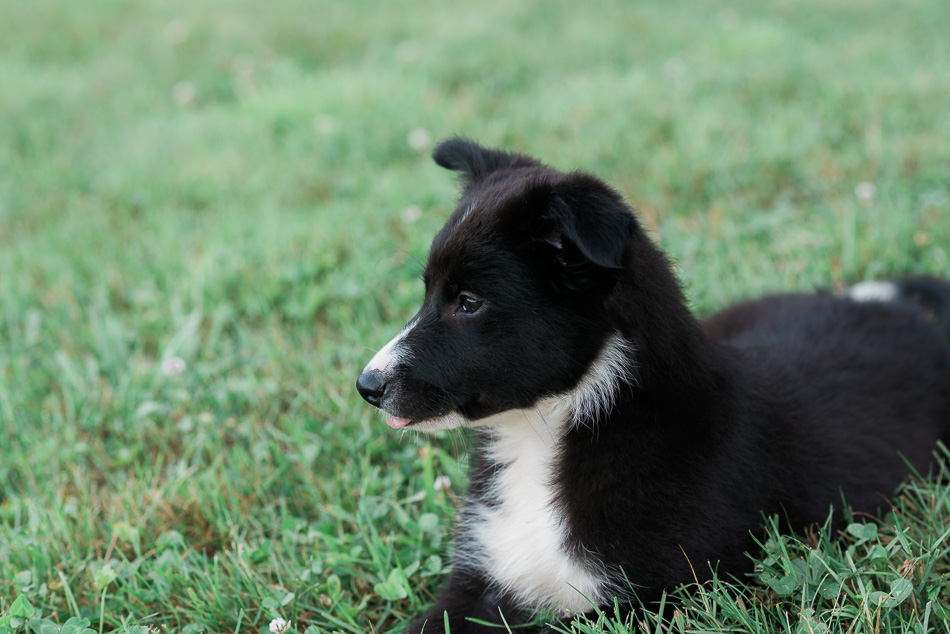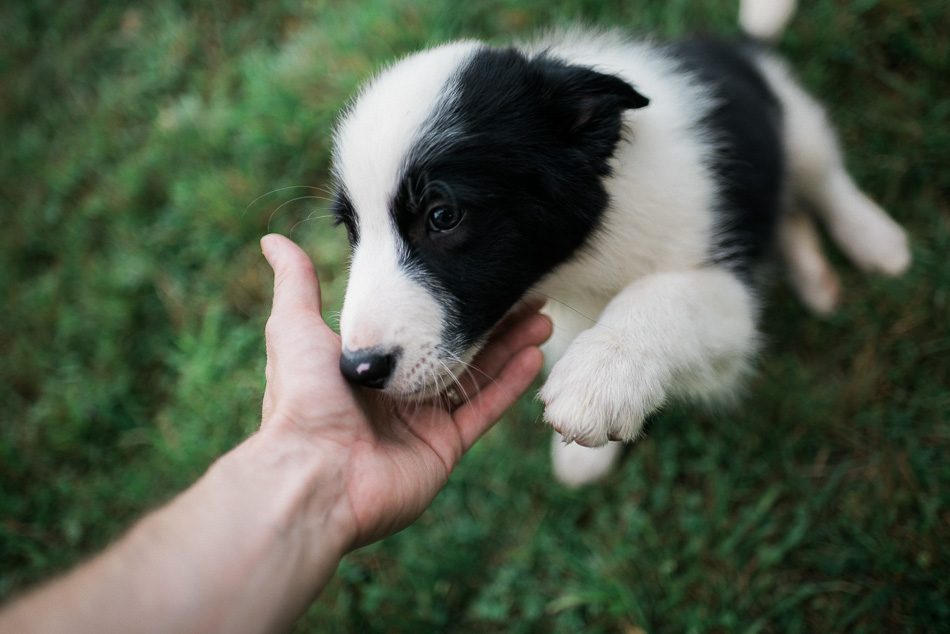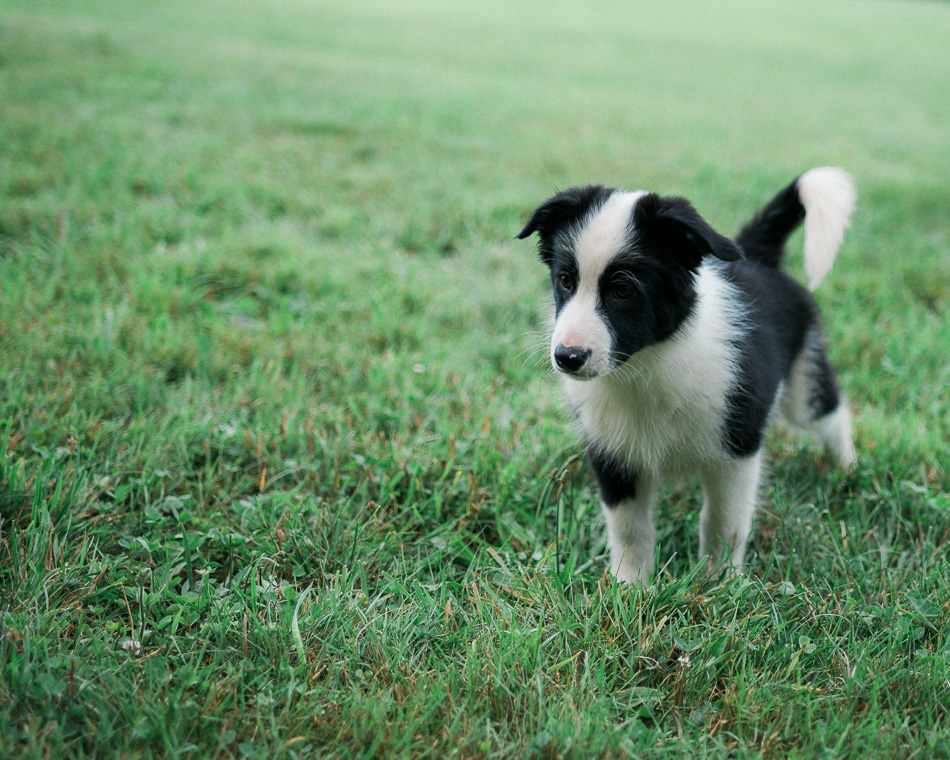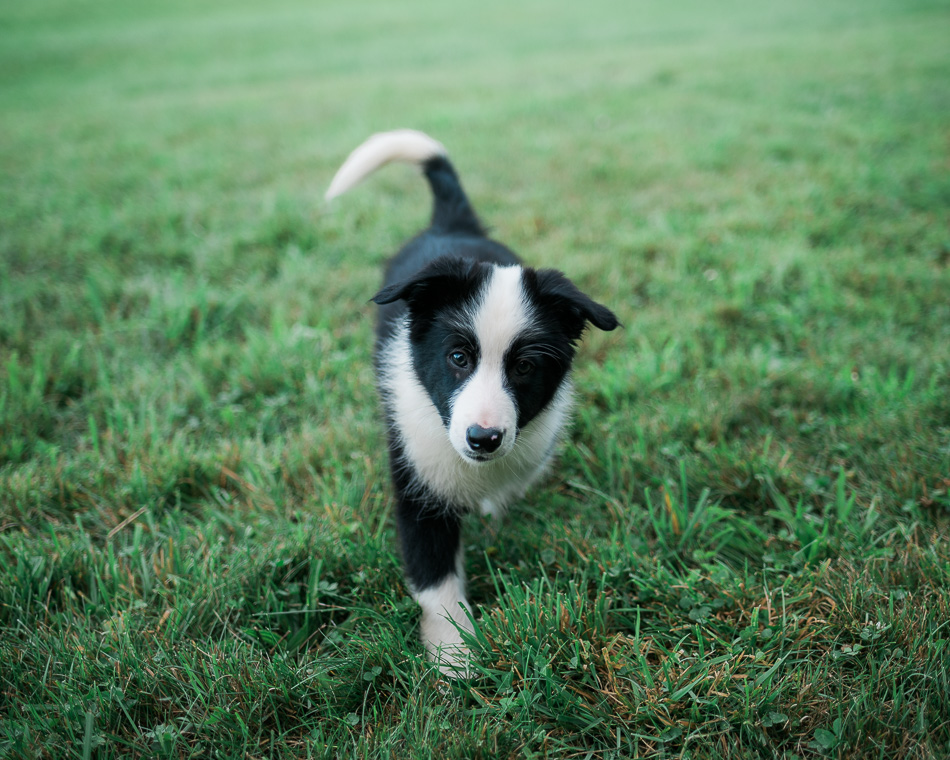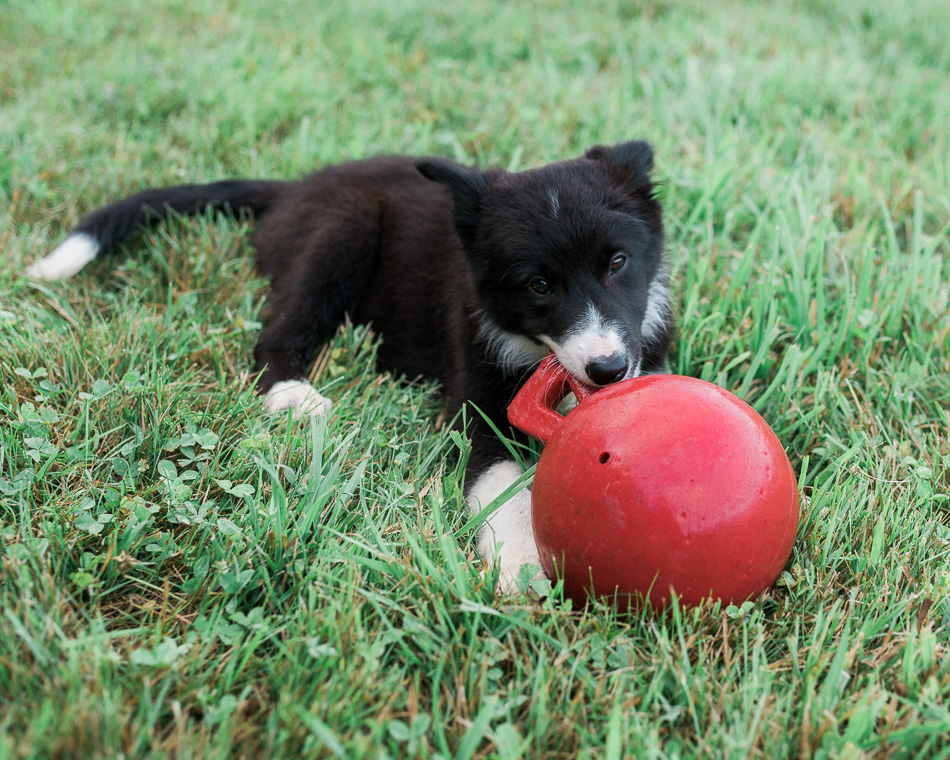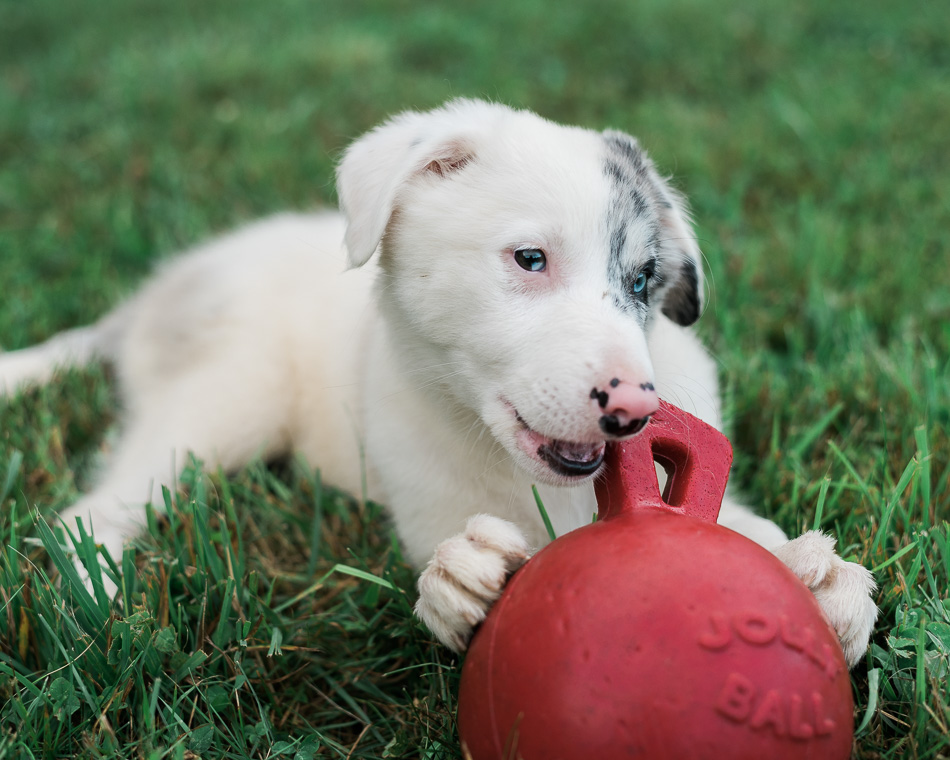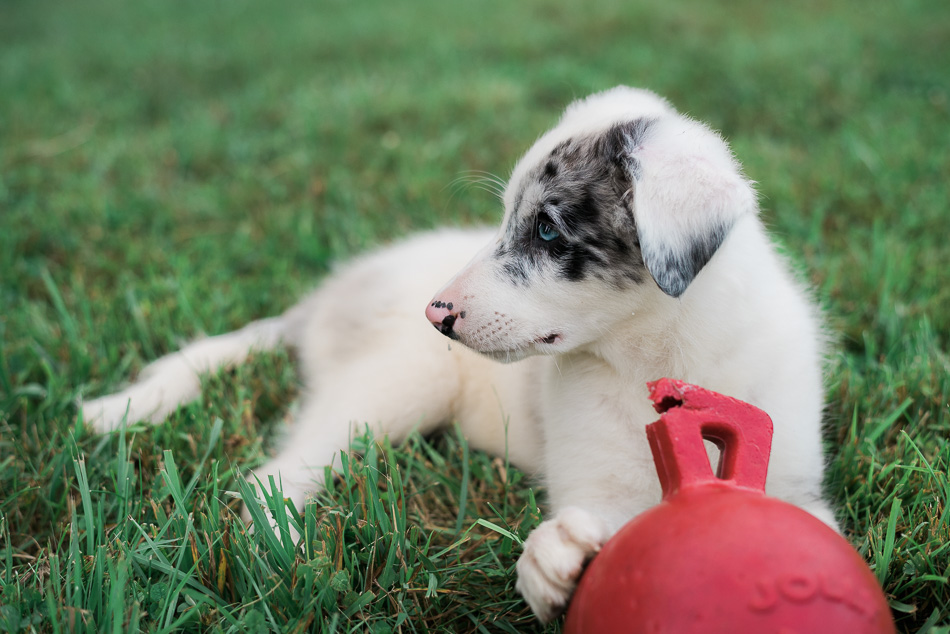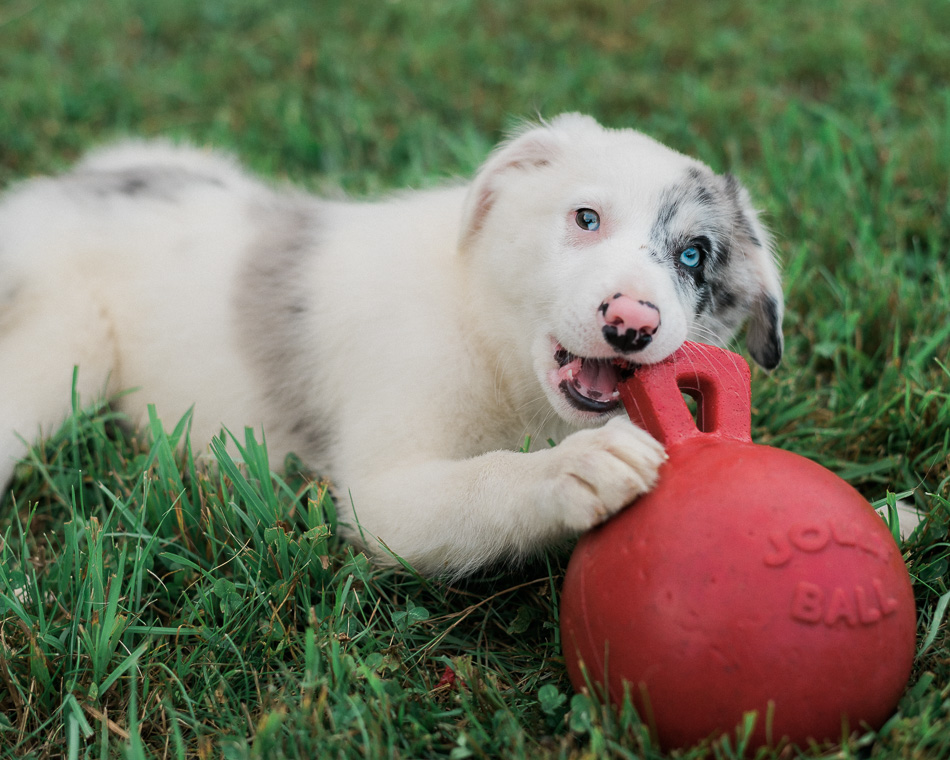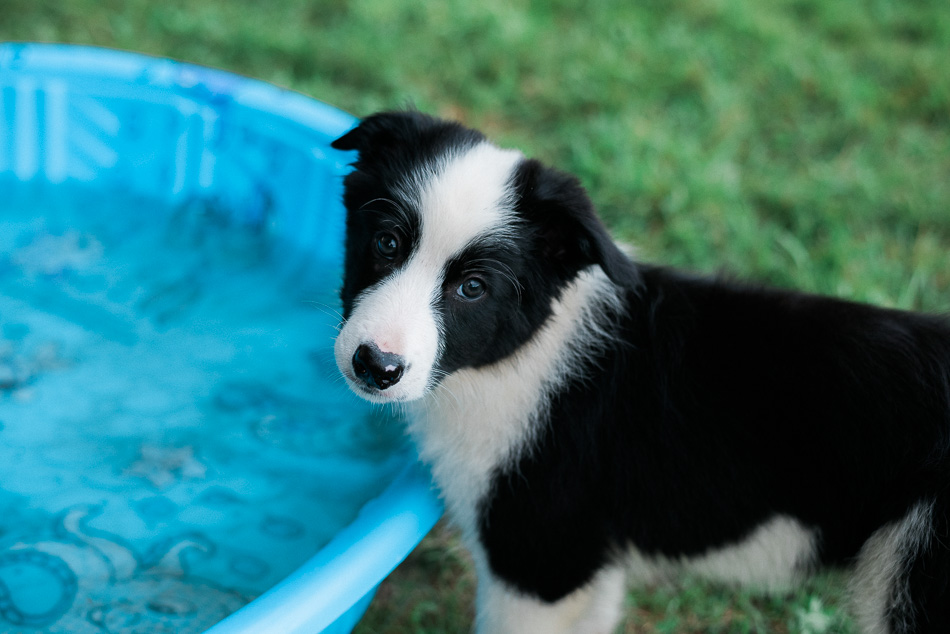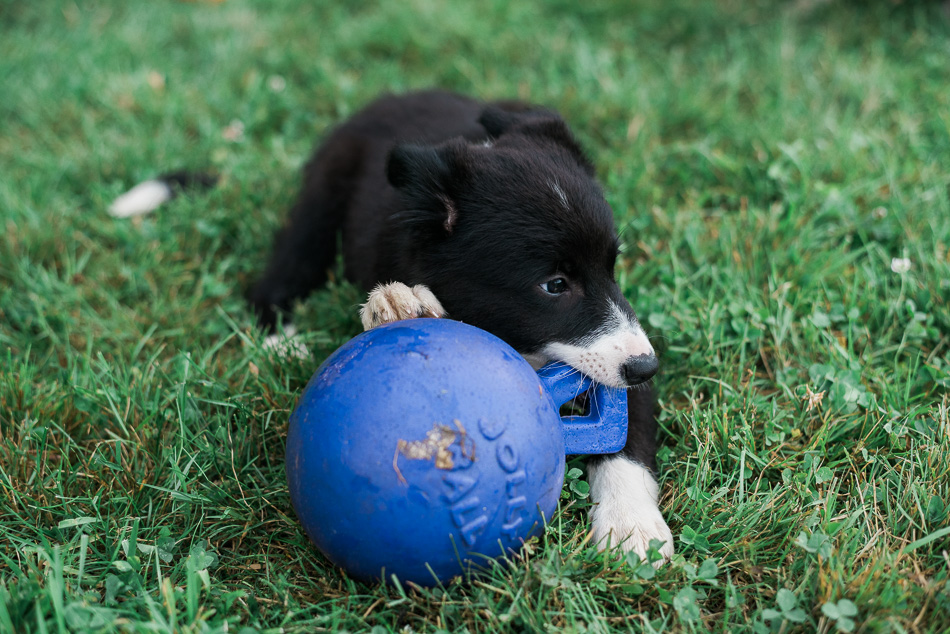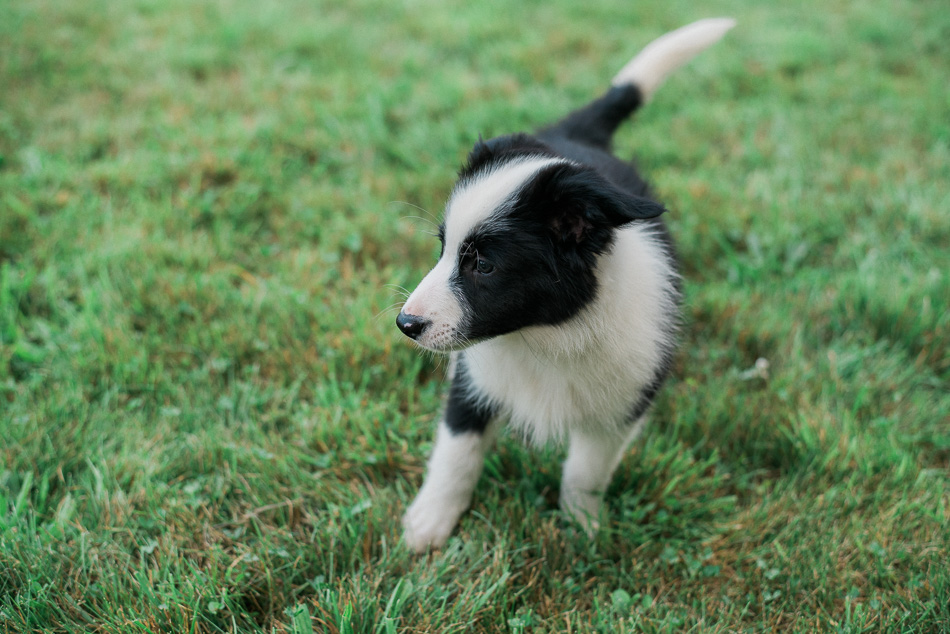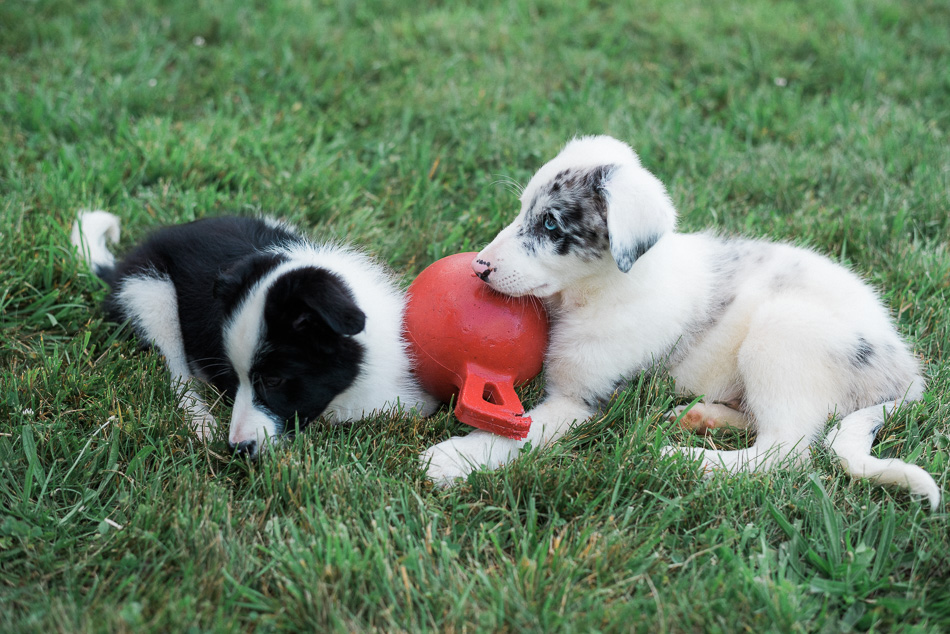Great Blue Heron Portrait Session

Before work on Friday morning, I decided to visit the dam near the entrance to the Ashuelot River Park in Keene. On several previous mornings, I have seen a great blue heron hunting near the base of the dam and I had a strong feeling that I would see it again. When I first arrived at the overlook on the northern side of the dam, mist was rising from the base of the dam due to the cool morning air. A quick scan of the area below the dam revealed nothing, and I felt very disappointed because normally my intuition is pretty good when I actually listen to it. Just before I gave up and headed back across the wood-planked bridge, something caught my eye in the mist near the base of the dam on the other side. When the mist parted a bit, I was able to see a great blue heron standing quietly on the flat stones at the base of the dam. I took a few documentary photos from my position on the other side of the dam, but the heavy mist obscured most of those photos. I quickly made my way back over the footbridge and headed for the overlook at the other end of the dam.
Knowing that the great blue heron was hunting below, when I got within ten feet of the overlook on the other side of the dam I went into stealth mode, crouching low and easing my way towards the railing at the edge of the overlook. I watched the heron carefully, timing my movement to coincide with the heron looking away from me. After I few minutes, I reach the railing and was in perfect position about fifteen feet above the heron. The stars were aligned — I had my long telephoto lens on the camera ready to go, a good vantage point, and so far I had gone completely undetected. I dropped my camera into quiet mode to keep the shutter sound to a minimum, and began making photographs of the great blue heron below.
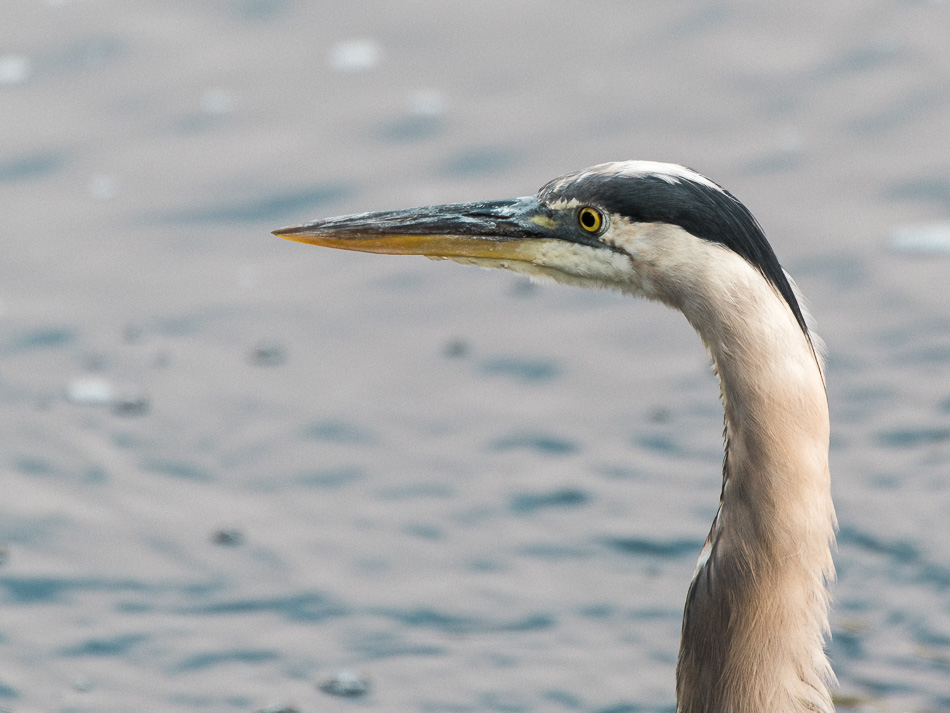
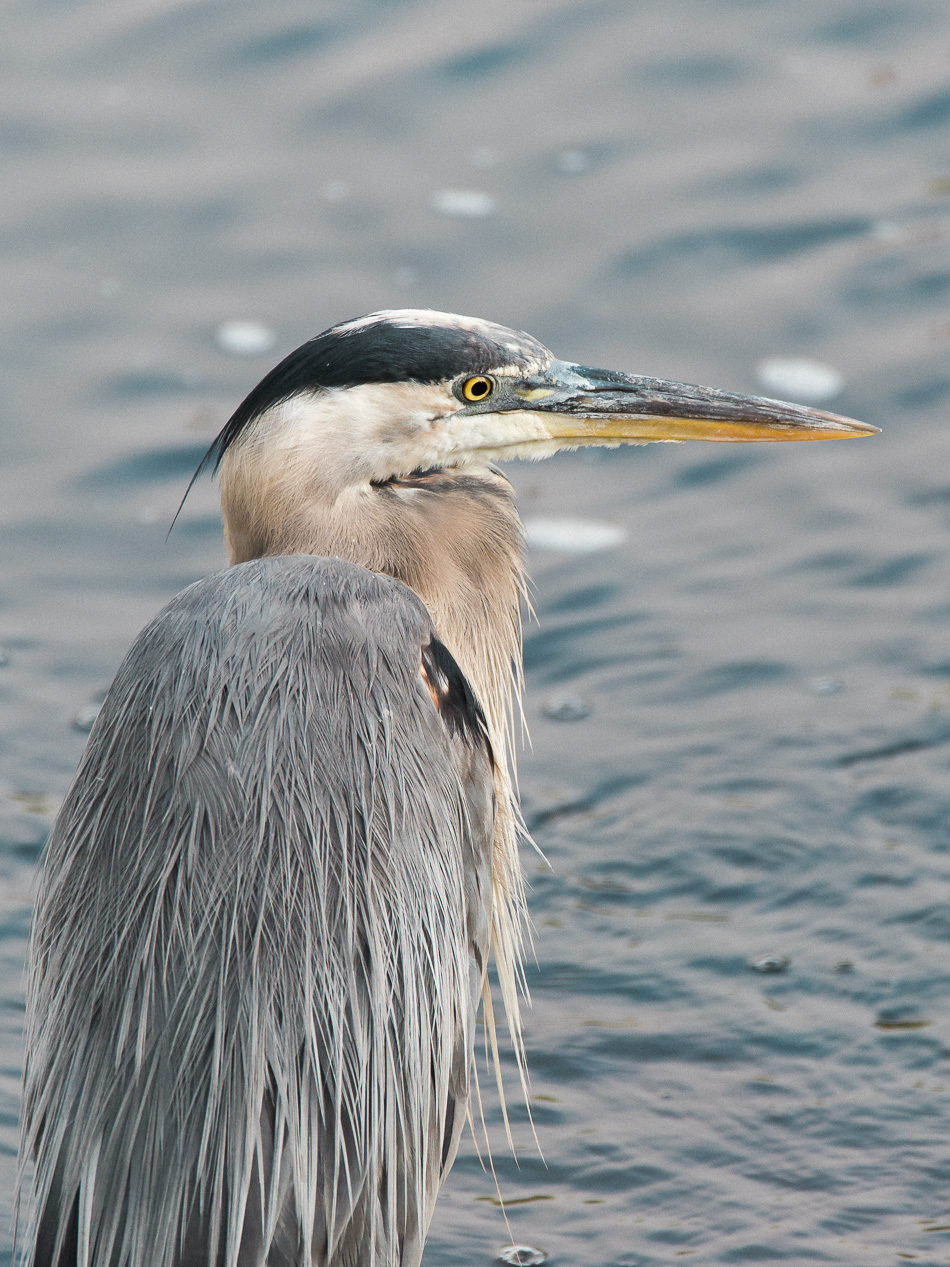
After a few minutes, something in the great blue heron shifted as it went from meandering and casually looking around into a more distinct and very serious hunting mode. The heron began to open its beak, as if it was anticipating its next successful catch.
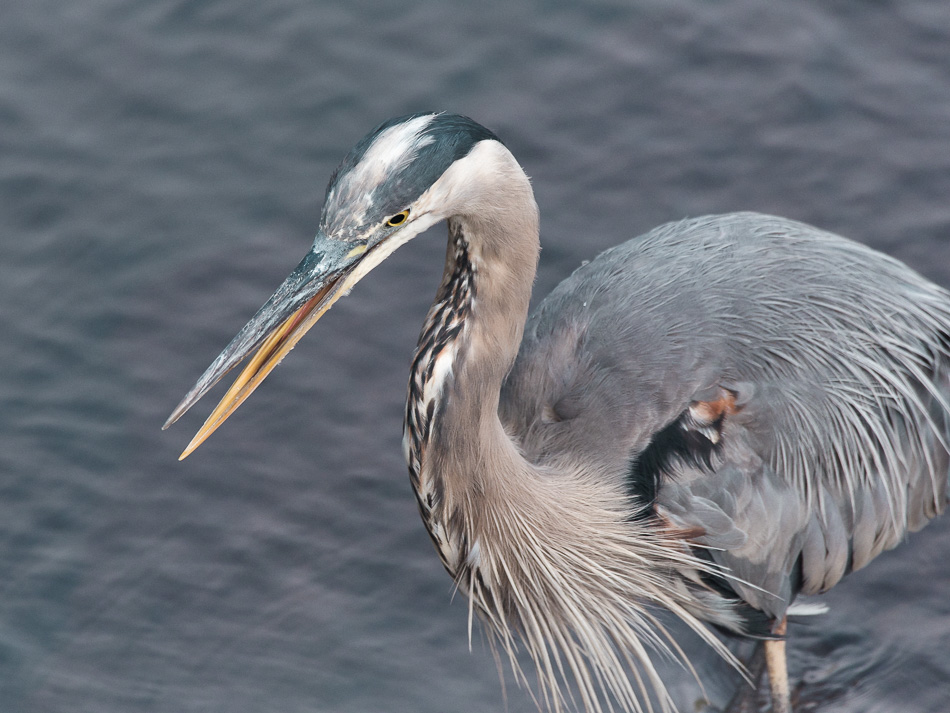
On several occasions, the great blue heron assumed a very low posture, its enormous body parallel to the surface of the river. The heron even tilted its head, as if putting an ear towards the water to listen for prey.
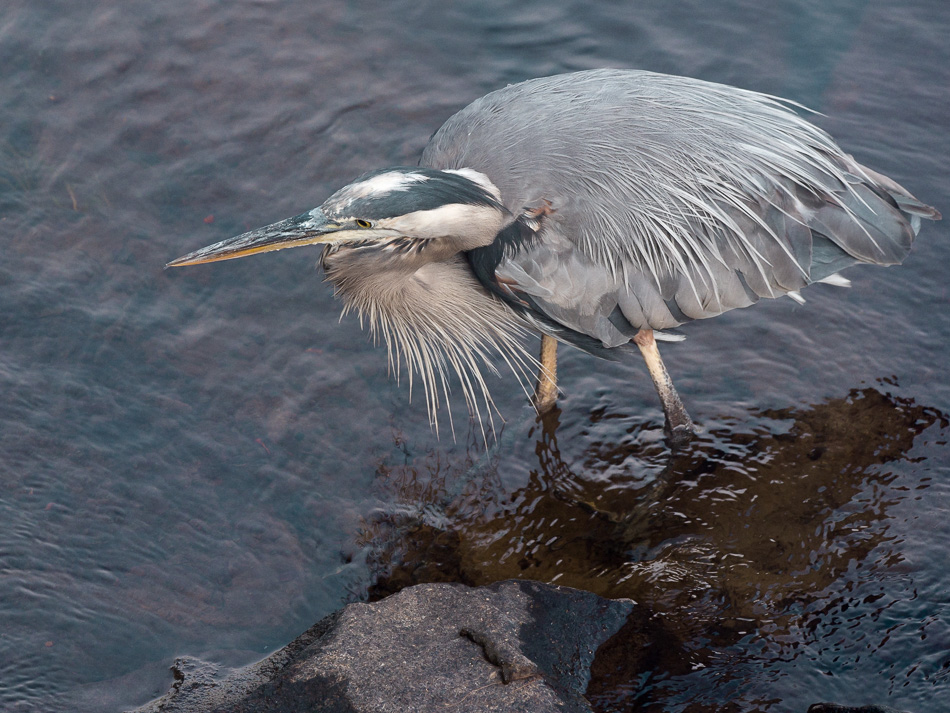
It is always a treat to watch these magnificent birds in action because their focus, intensity, and patience is unrivaled. I find this inspiring, because these are qualities that I often aspire to in my own life.
Shadow Lake at Dawn

This morning at dawn, I visited Shadow Lake in the western part of Keene, NH. More small pond than lake, Shadow Lake is a ten acre nature preserve next to the Black Brook that features a small pond, stream, and forest. Despite its small size, it is a perfect location for watching birds and other wildlife.
When I first arrived, I noticed two birds that I mentally labelled “ducks” swimming on the pond. They were some distance away, and even with a long telephoto on my camera it was still difficult to identify them in the field. A later inspection on my computer revealed that these were hooded mergansers, probably young females. They flew off rather quickly upon discovering my presence.
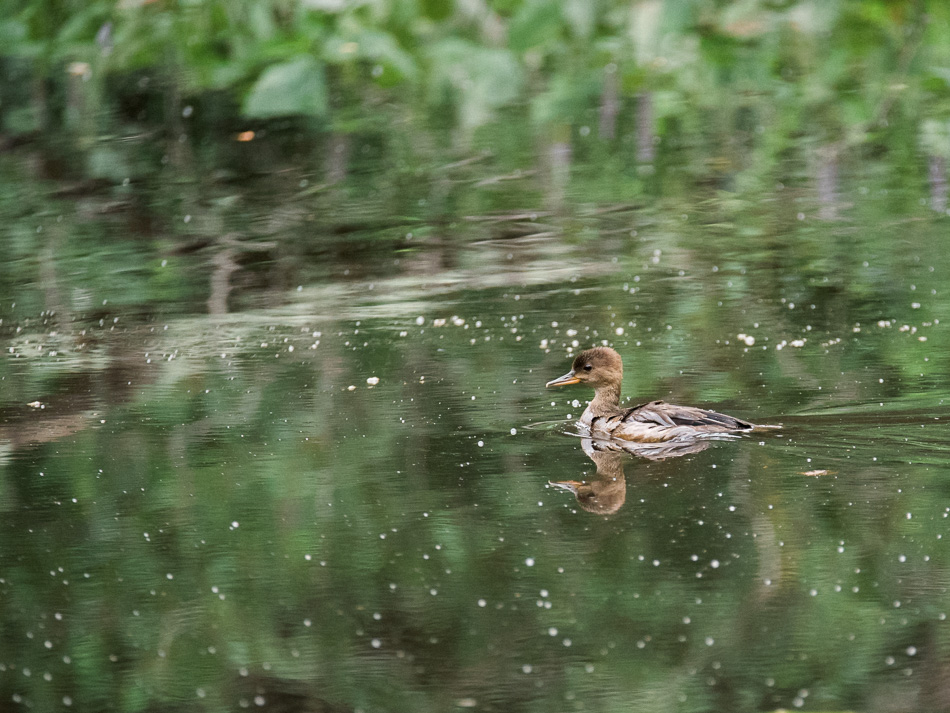
One key feature of Shadow Lake is its trees, both living and dead. The dead trees are especially interesting with their gnarly trunks and woodpecker holes. Many of the living trees stretch out over the edges of the pond, shading it surface with a canopy of green leaves.
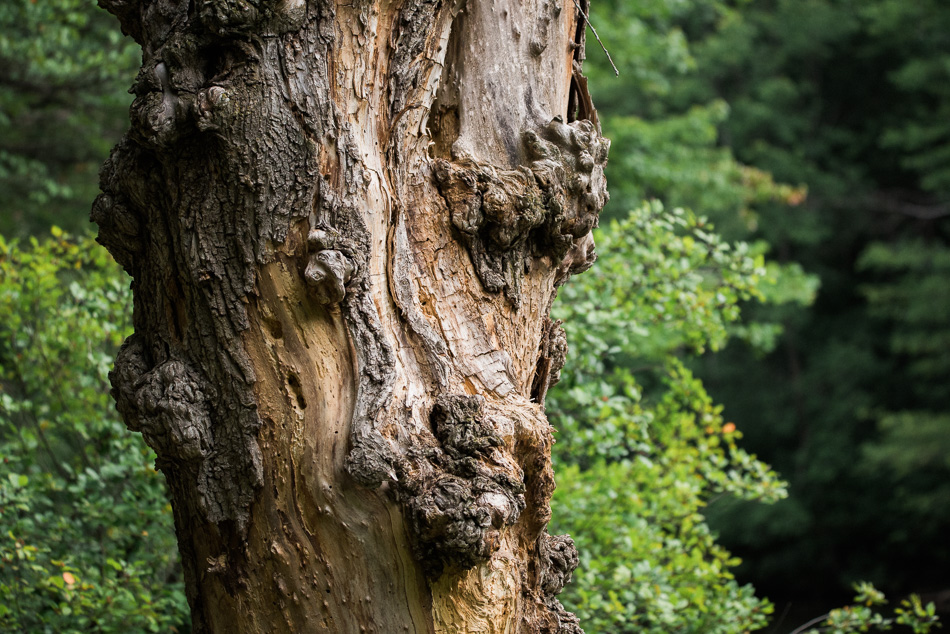
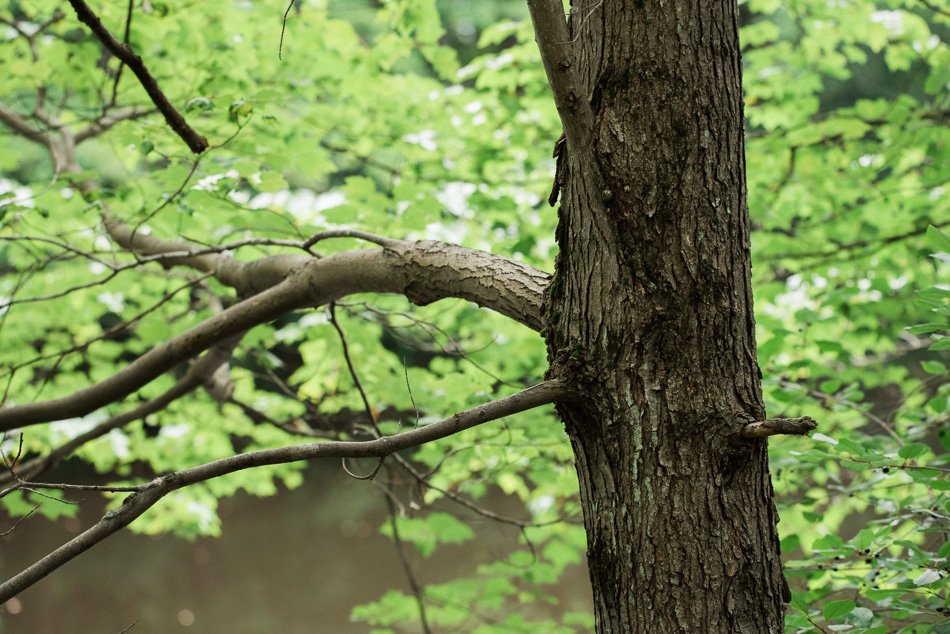
Halfway through my visit, I noticed a rather large group of young mallards emerge from the end of the pond near Kendall Road. They quickly organized into proper formation as they entered the main part of the pond. It was clear that the young males were starting to transform into their adult colors, with yellow in their beaks and a trace of green forming on the top of their heads.
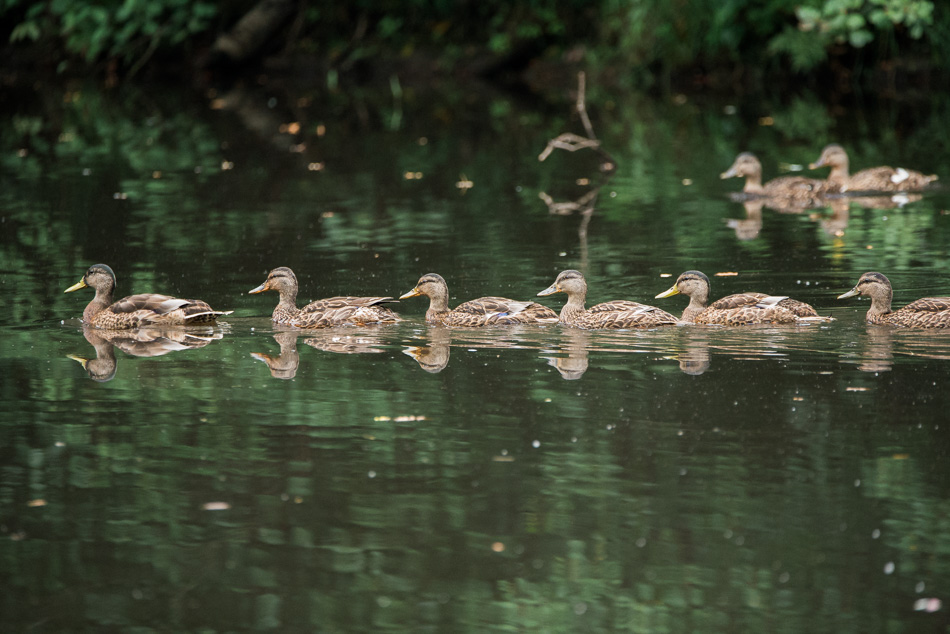
After watching the mallards and photographing them for some time, my attention turned again to the dead trees, which were lit perfectly in the early morning light.
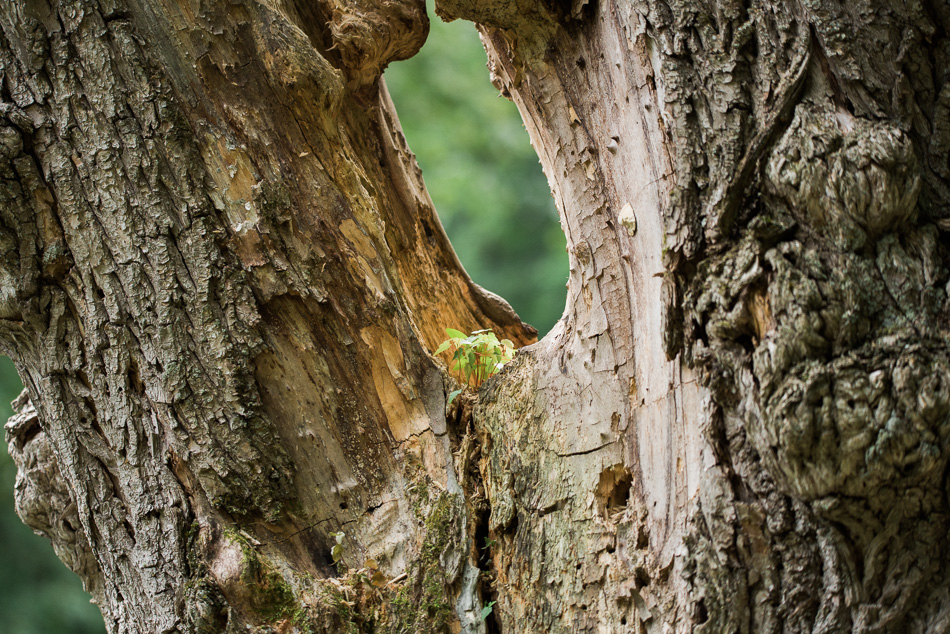
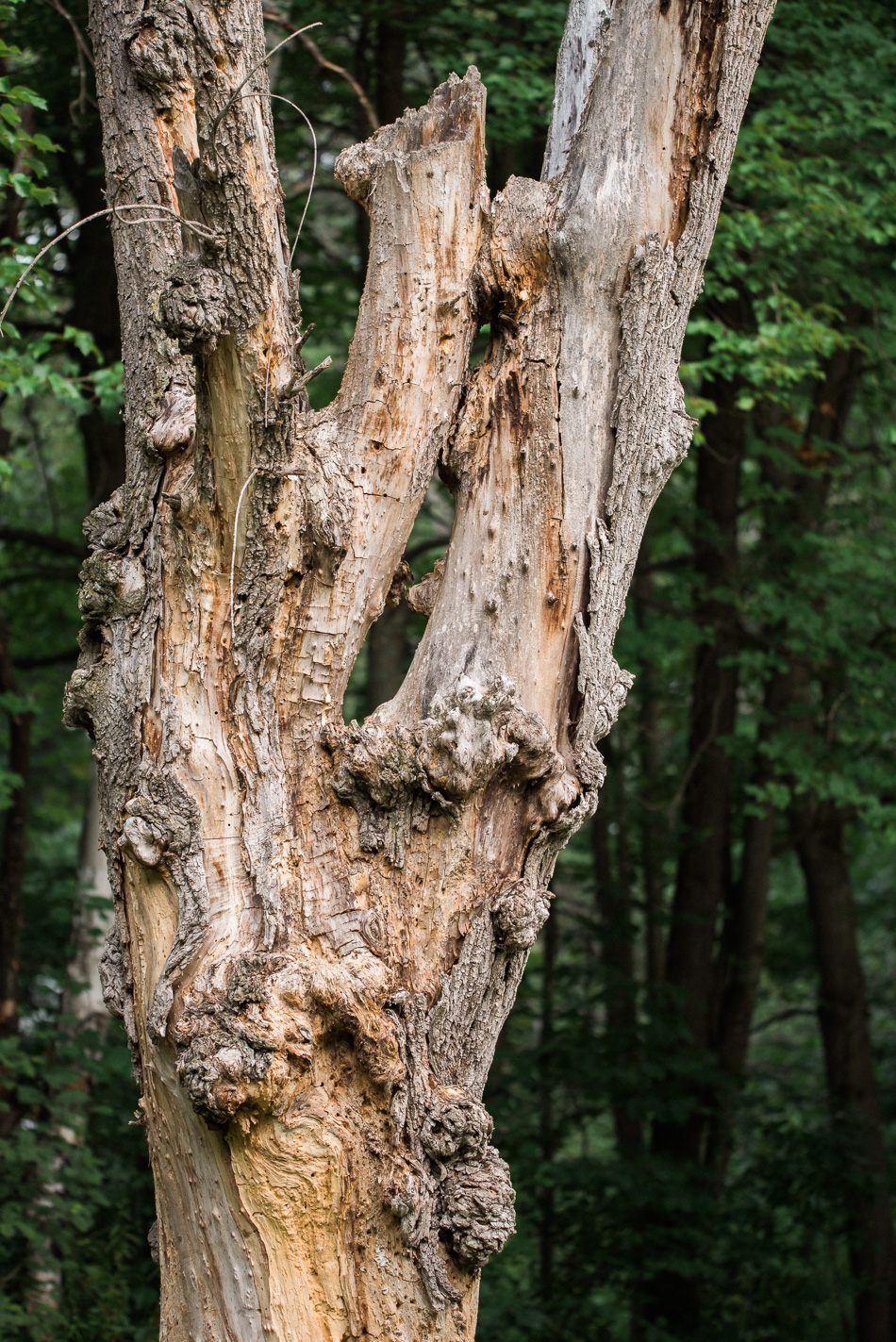
One end of the pond is covered with aquatic vegetation, providing perfect overhead cover for a number of frogs that were partially submerged near the shore. Most of them darted away quickly upon hearing me, but one decided to stay behind and pose for my camera.
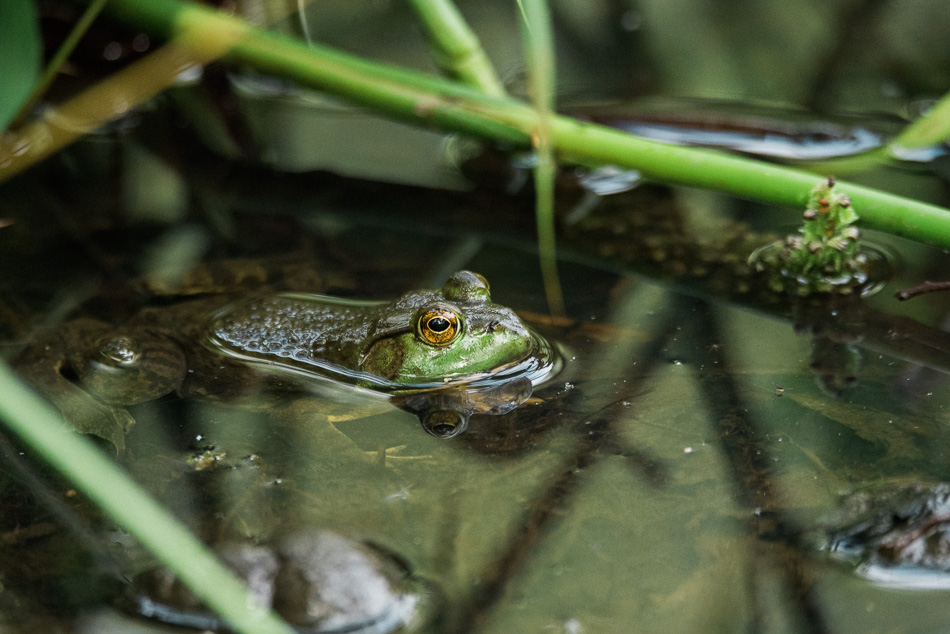
Looking up after photographing my new amphibian friend, I noticed a downed tree across the lake that was reflected perfectly in the mirrored surface of the water.
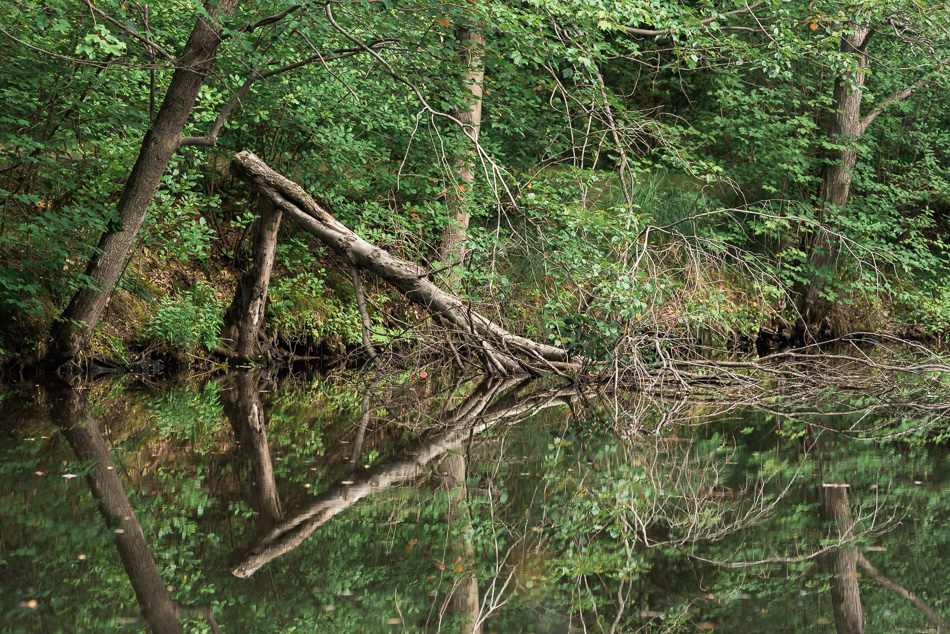
An artist friend of mine, Jim Murphy, lives near Shadow Lake and has used scenes from the area as inspirations for his paintings. In many ways, walking around the path was like strolling through a series of Jim’s paintings, and it was easy to see why the area has provided such an influence on his work. There is a peacefulness and calm here that is truly special, and Jim captures that in many of his paintings.
After a short walk back up the path and across the footbridge, I returned to my parked car and made my way home. I promised myself that I would visit Shadow Lake more often.
North of Surry Dam

Thanks to an extended dry spell here in southwest New Hampshire, the eastern shore of the Surry Dam reservoir is exposed and dry enough to walk on, with a few stretches of the beach requiring a good pair of waterproof boots due to the mud. Yesterday I had explored the beach as far north as I could go with my ankle high boots, but eventually ran into one of those muddy stretches of beach and was no longer able to continue. Later in the day, I purchased a pair of waterproof Muck boots so that I could access wet areas like this without losing a boot. This morning, I returned with my new boots determined to make it further up the shore.
I arrived at the dam just after the park opened at 8am and made my way across the dam on foot with the new boots lashed to my backpack. After crossing the dam and making my way down to the beach at the eastern end of the dam, I changed into the Muck boots and began making my way up the shore. Not long after I started this trek, I noticed some beautiful clouds were streaming over the dam, reflected on the still surface of the reservoir.
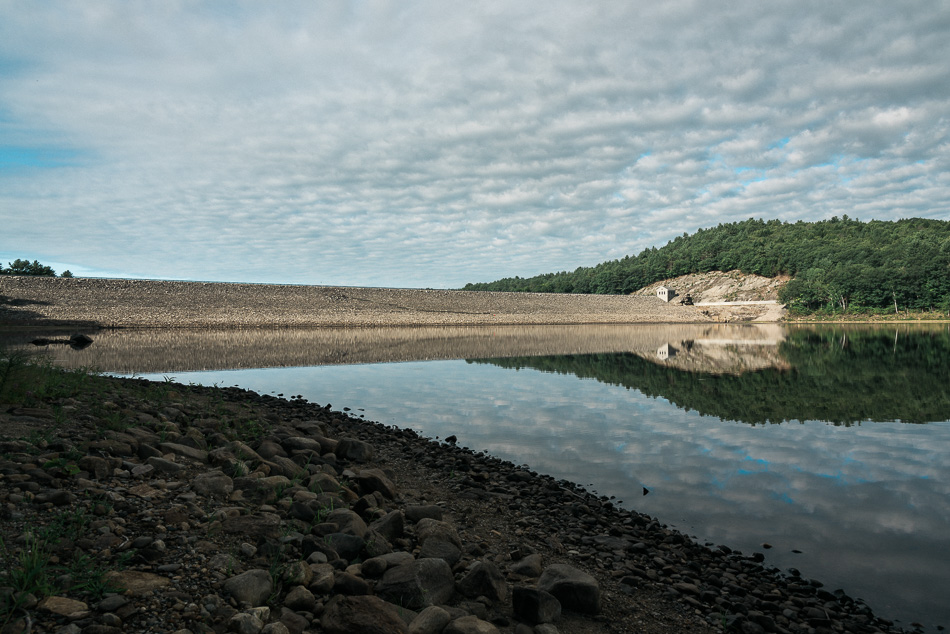
After rounding several small peninsulas, I found myself positioned well north of the dam and almost dead center to it. The clouds were still interesting, and the water still calm, creating the perfect conditions for my first photos from this new vantage point.
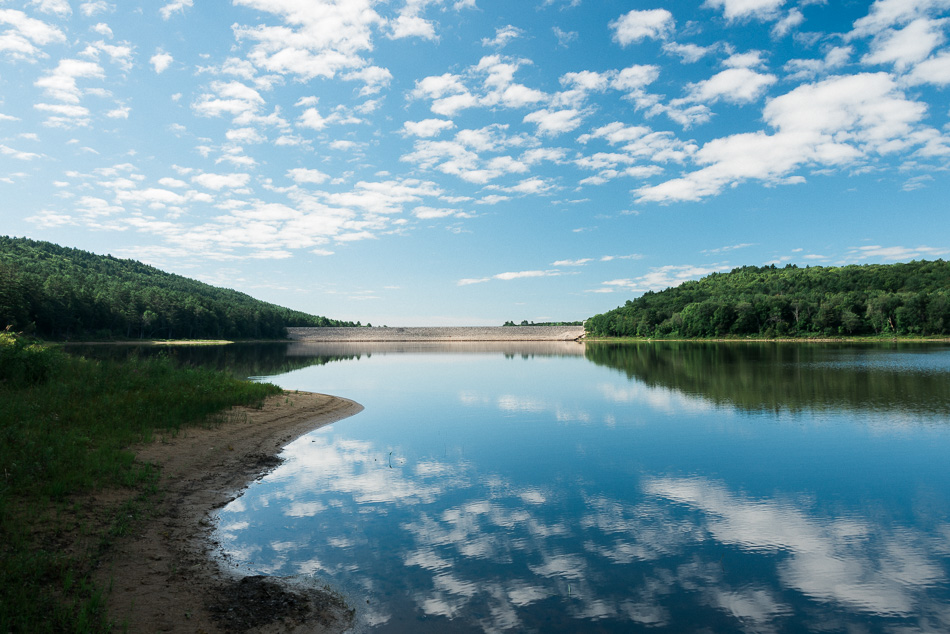
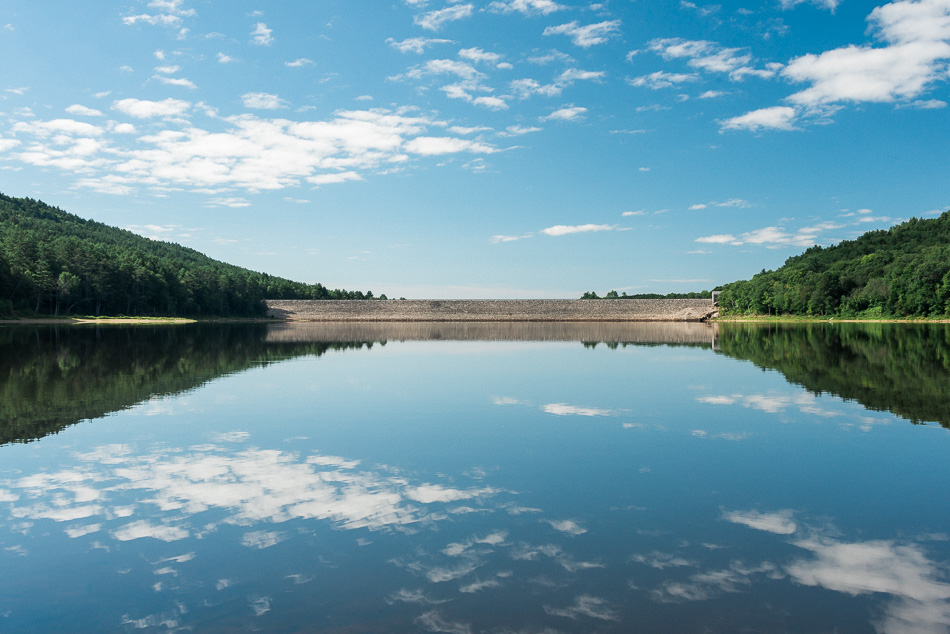
After encountering a fledgling bald eagle and following it around a few more small peninsulas, I arrived at a large marshy area toward the north end of the reservoir. This is the area where I believe that the bald eagles are nesting, because I found the young eagle had joined an adult eagle in one of the large dead pine trees on the eastern shore of the reservoir. This is an incredibly beautiful area of the reservoir, and one that I hope to visit again.
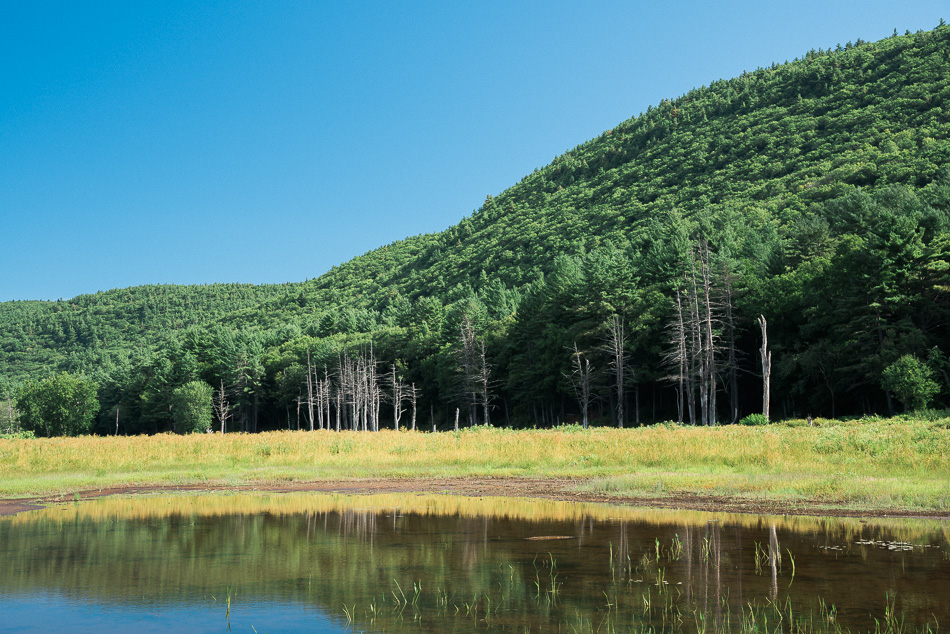
Immature Bald Eagle at Surry Dam

After a brief encounter with an adult bald eagle yesterday morning at Surry Dam, I returned there again today armed with a new pair of Muck boots that would allow me to venture further north along the muddy eastern shore of the lake. Much to my surprise, my first eagle encounter was with a large, immature bald eagle that was resting in a tree. Its dark brown color and the traces of yellow in its beak suggested that the young eagle had begin the process of transforming into the colors of a more mature bald eagle. The young eagle kept a close eye on me, looking backwards over its shoulder in my direction.
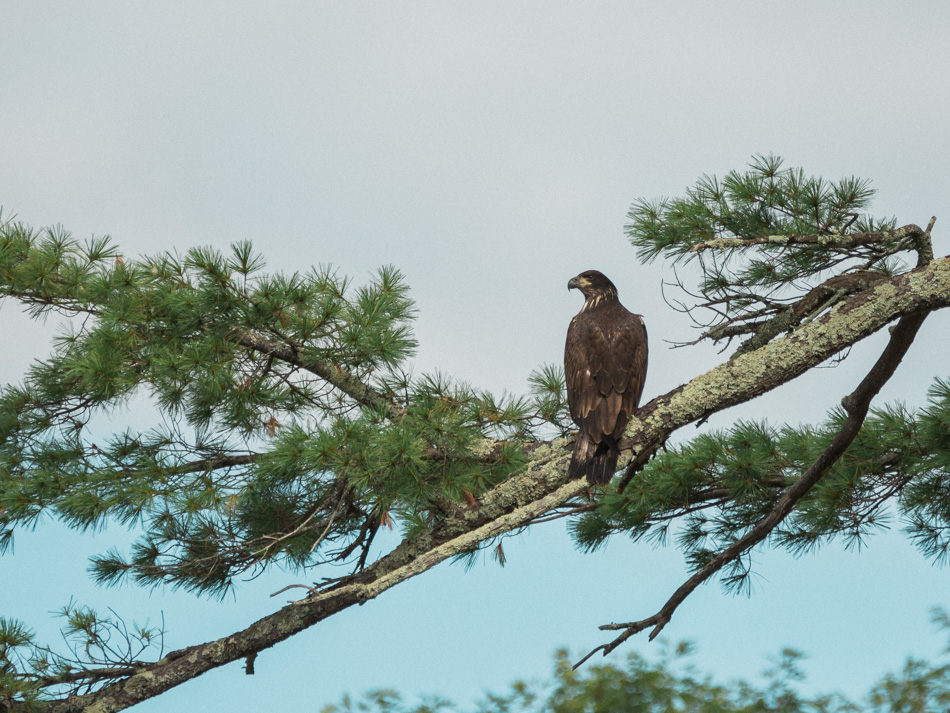
With my poor fieldcraft, it did not take very long for the young eagle to take flight, which gave me an opportunity to capture my first in-flight photos of an immature bald eagle.
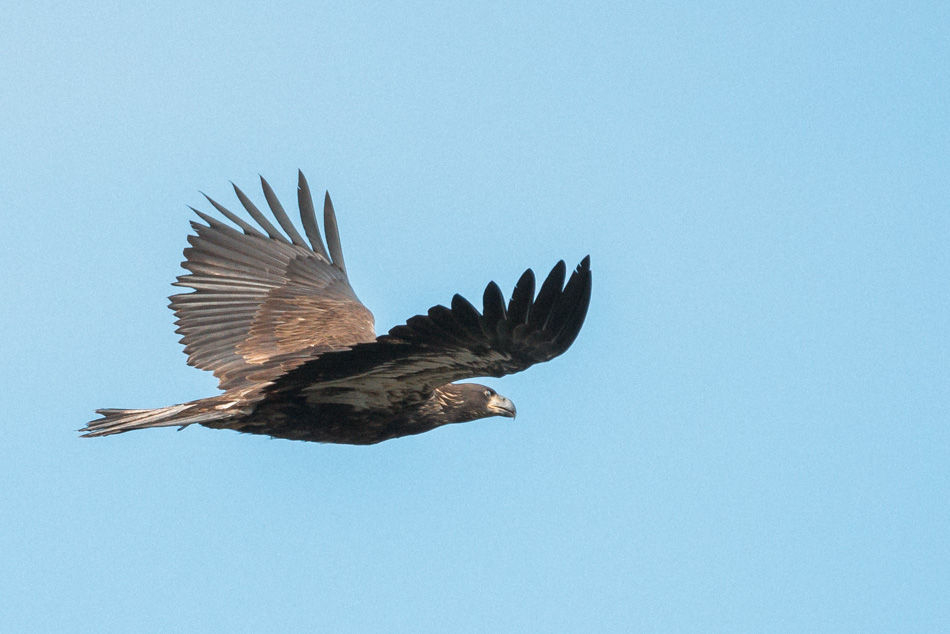
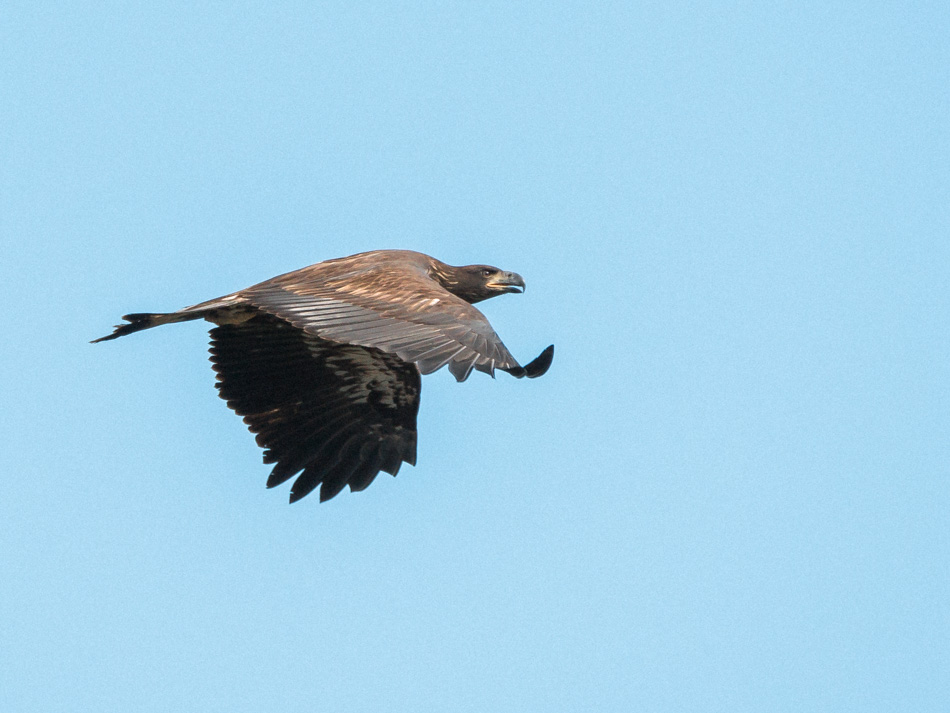
The eagle flew around the outcropping of land to my north, and it took several minutes to reach that spot and peer around the corner into a marshy cove that featured a number of dead trees and large white pines. It was here that I found the immature eagle roosting in a tree, joined by its parent.
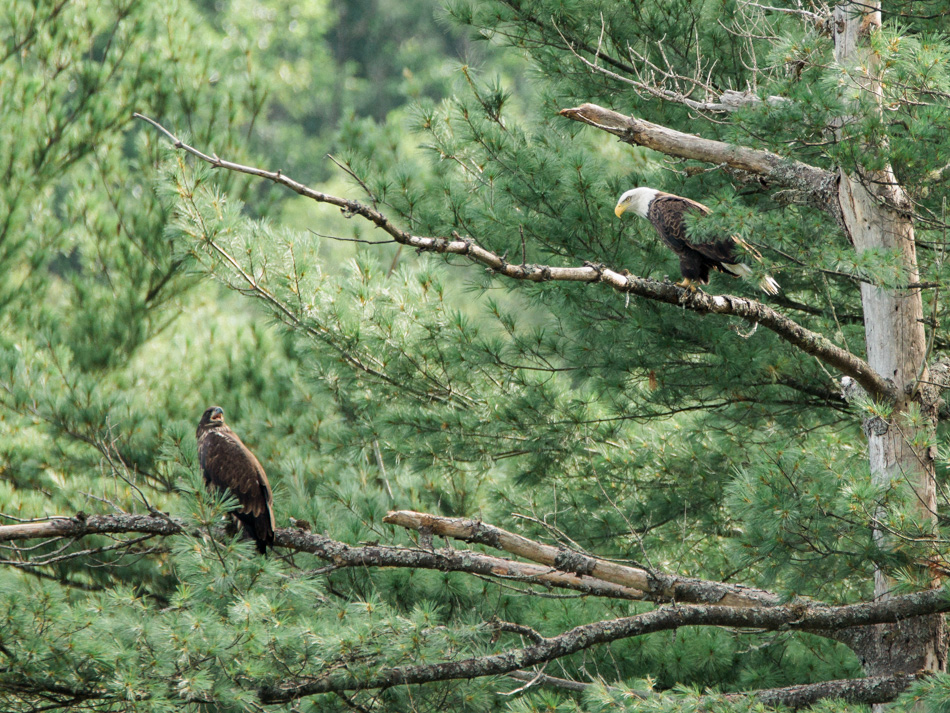
The two eagles called loudly back and forth to each other, with the adult eagle taking flight and performing a series of loops above the trees before moving further up the shore. At this point, I decided to back off since I was pretty sure that I was near their nest. I had already placed too much stress on both birds, and did not want to continue that pattern for my own benefit. Now that I have a general idea of where the eagles can be found, I can return and practice some softer approaches to make myself less threatening to these magnificent birds.
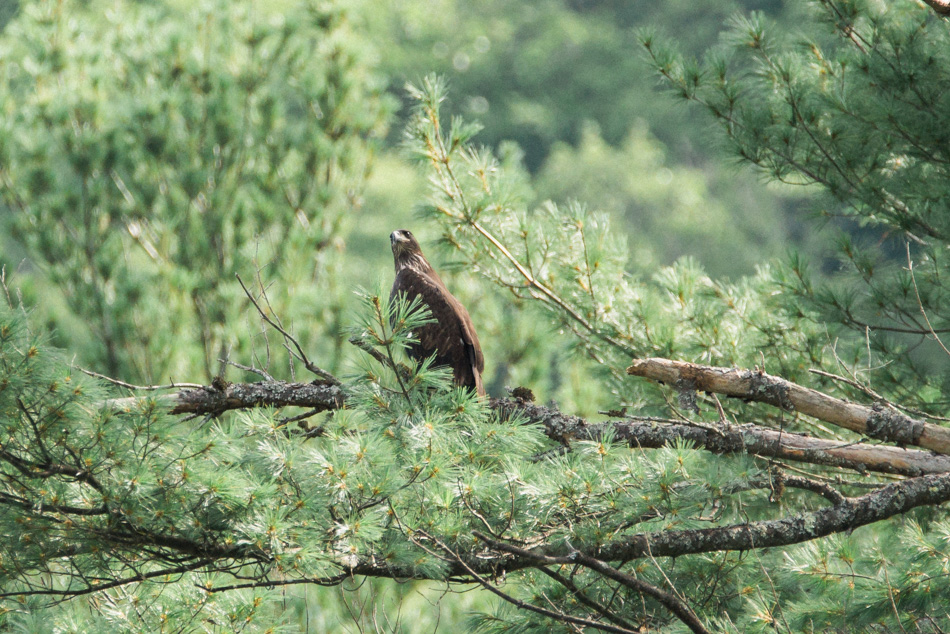
Common Loon at Surry Dam

I had a very interesting photo outing at Surry Dam this morning. As soon as I reached the elevated bridge connecting the road to the top of the dam, I spotted a great blue heron perched on a rock downriver, patiently hunting in the Ashuelot River. After snapping several way-too-far-away photos of the heron, I worked my way quickly across the dam, down on to the lawn on the southern side. Trying to approach stealthily, I reached the edge of the grassy lawn overlooking the river just in time to see the heron take flight, heading downriver away from me. Clearly, I need to do some work on my fieldcraft.
I headed back to the top of the dam, and followed a trail on the eastern end of the dam down to a small beach at the base of the dam on the northern side. I found a nice rock to sit on at the edge of Surry Mountain Lake, and patiently waited to see if something interesting would fly by. After waiting for what seemed an eternity, I saw a large brown-winged bird flying across the lake. I attempted to focus on the large bird, but from that distance only managed to focus on the distant trees. It was probably a Canadian goose, but my photos were far too blurry to tell for sure.
Deciding that I needed to move, I noticed that the water level in the lake was unusually low, and that much of the eastern shore which was usually under water was exposed. I decided to make my way along the short to see how far I could get. I was able to capture a perspective of the dam that I had never seen before.
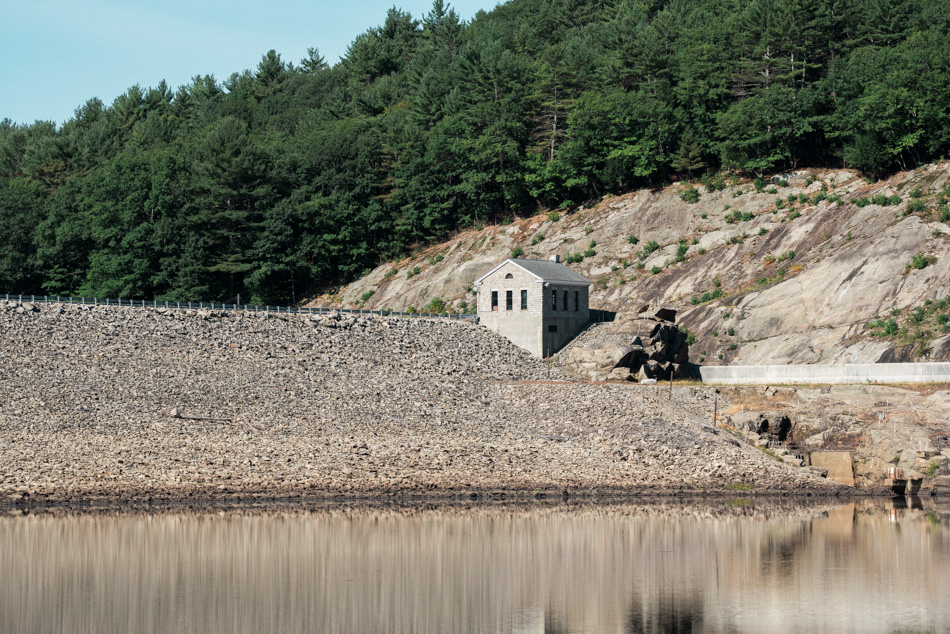
About thirty yards past that spot, I startled a large bird off to my right. The large bird flew in front of me heading to my left. Training my lens on it, I could see that I had flushed a bald eagle from one of the large trees on the riverbank.
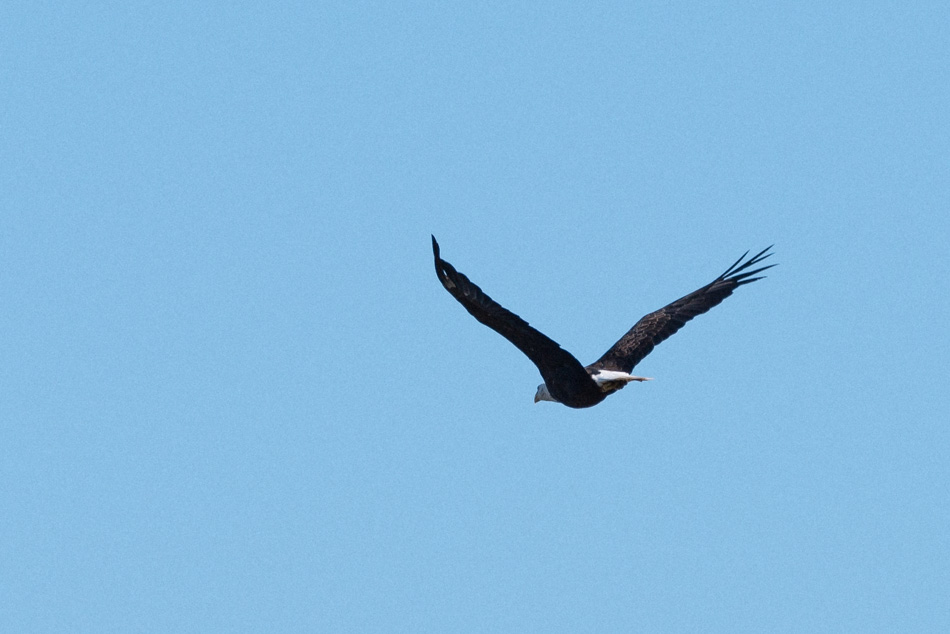
After losing sight of the eagle, I scanned the area to my right looking for a nest. The shore was lined with a mixture of dead and living large pine trees, and I concluded that it was a perfect area for a nest even though I could not pinpoint its location. Hoping for a return visit by the eagle, I crouched low on the muddy shore of the lake and started another round of patiently waiting for something interesting to appear. After about twenty minutes of this, I decided that my knees had had enough crouching and stood to stretch a bit. I was hearing plenty of bird noises around me, but nothing would reveal itself to me.
Moments later, I heard a big splash in the lake just in front of me. I also started to hear loud bangs going off much further to the North, near Surry Village. After hearing a few more loud bangs, I realized that someone was firing a rifle. I also began to wonder about that splash I had heard earlier. Had I mistaken one of the rifle shots for a splash? I did not have to wonder for too long though, because off to my left there was something in the water, way off in the distance.
Training my lens on the water, I struggled to find the spot that I had seen. Had I been imagining things? I lowered the lens to have another look. I could not find anything in that spot, but then off to the left, something popped up out of the water. I managed to zoom in on it, and could see that it was some kind of bird. It was still too far away to identify, so I decided to follow it until it disappeared again below the surface of the water.
What kind of bird is this? It floats like a duck, but disappears beneath the surface for long stretches before popping up again. What kind of bird does that?
After several rounds of spotting the bird only to lose track of it again, it finally came close enough for me to identify it. Zooming in on it, I realized that I was having my first in-person encounter with a common loon. I had seen photos of loons before, and even knew the sound of a loon’s call. However, I had never seen one in the wild, and I had definitely not played hide and seek with one before this encounter.
I took quite awhile for me to get used to the pattern of losing the loon, finding the loon again, and quickly snapping off a few photos before it disappeared again. Fortunately, the loon was patient with me and gave me enough cycles to get into a good rhythm. I learned how to quickly run down the beach and jump over downed trees to get into a better position while the loon was submerged. I learned how to quickly zoom into the loon’s position once I spotted it on the surface of the lake with my naked eyes. The following series is the result of that training, my first encounter with a common loon.
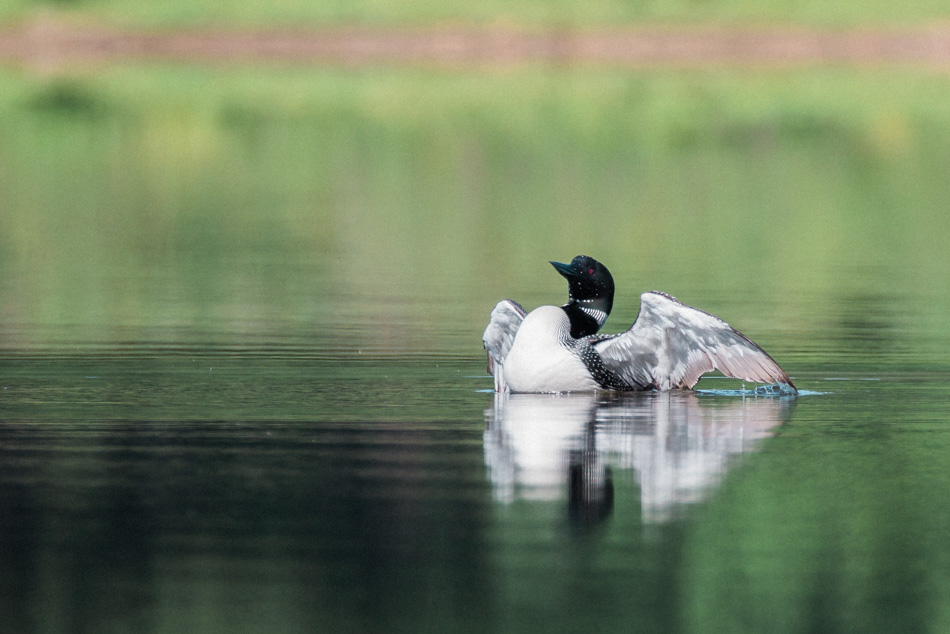
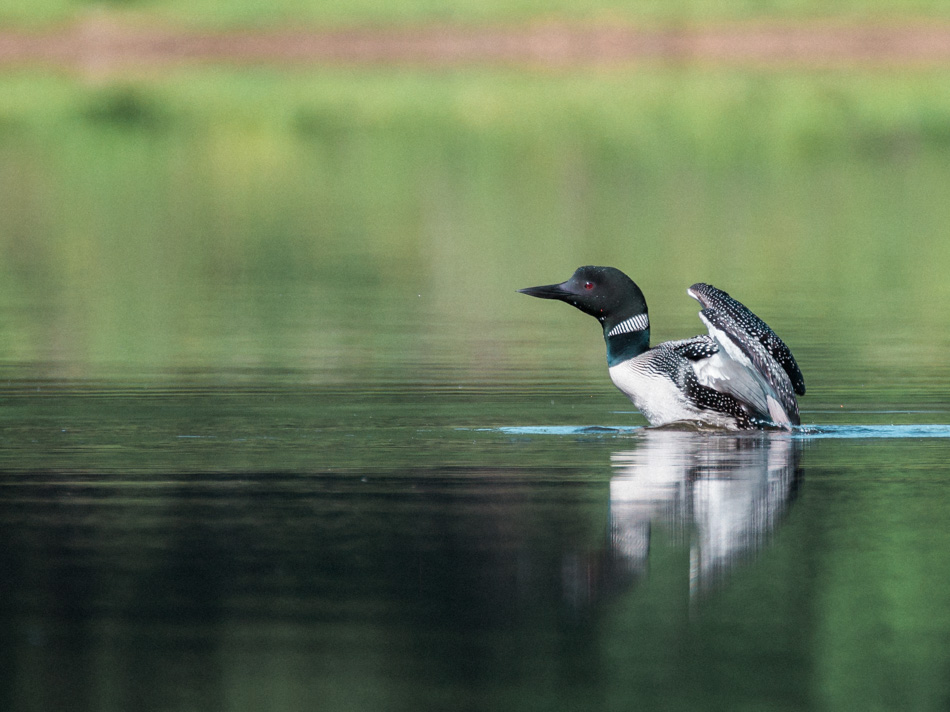
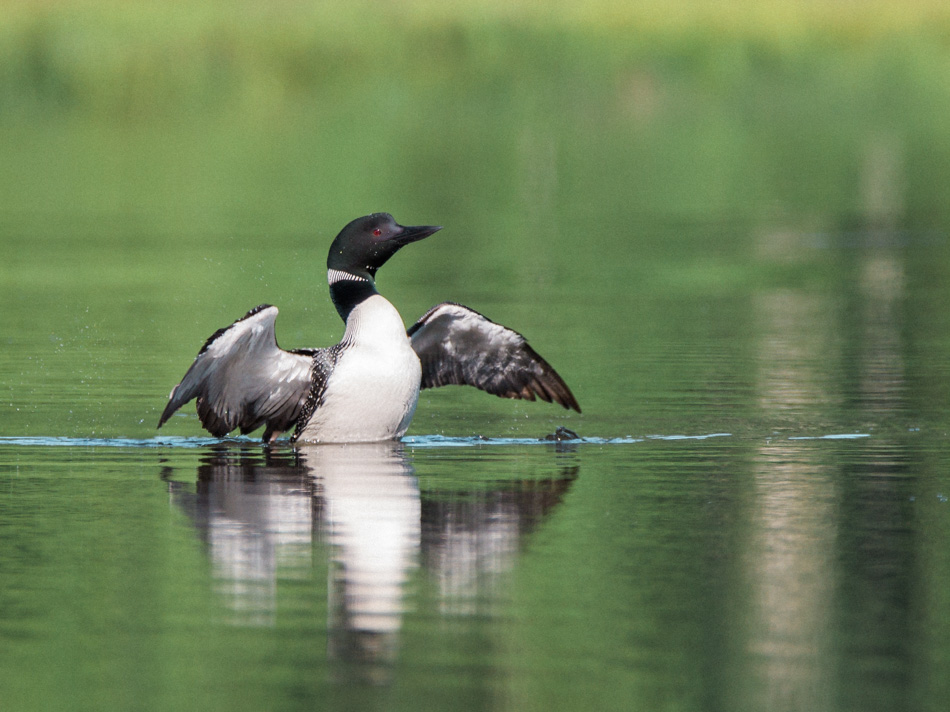
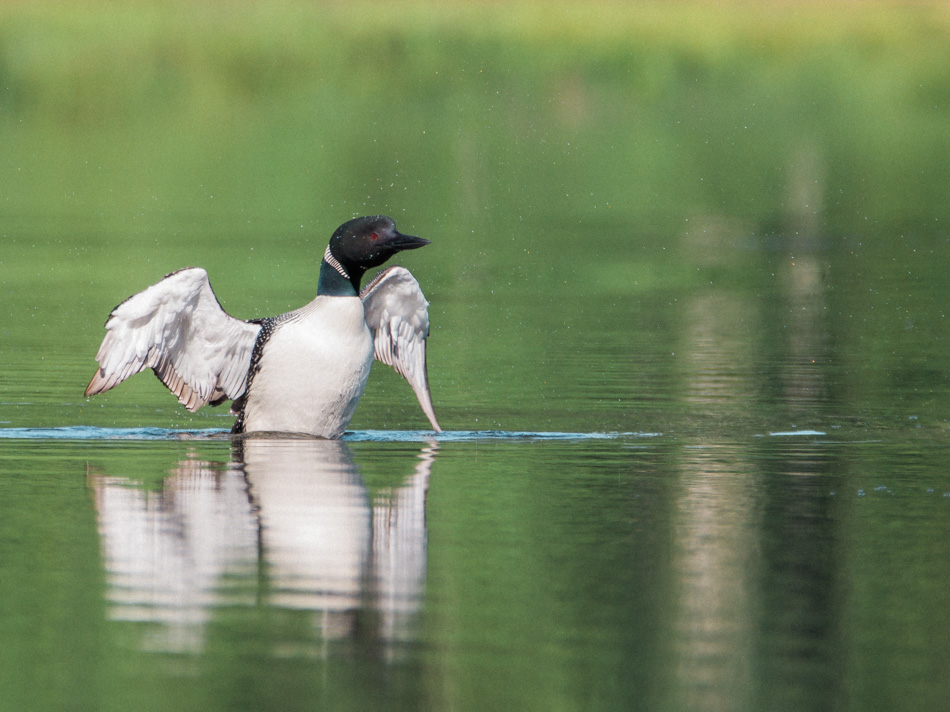
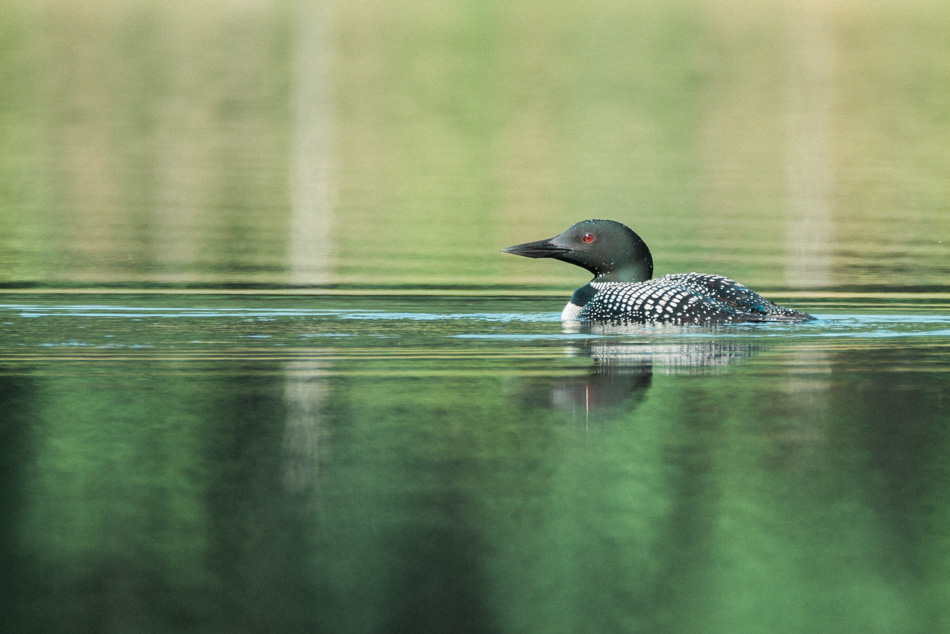
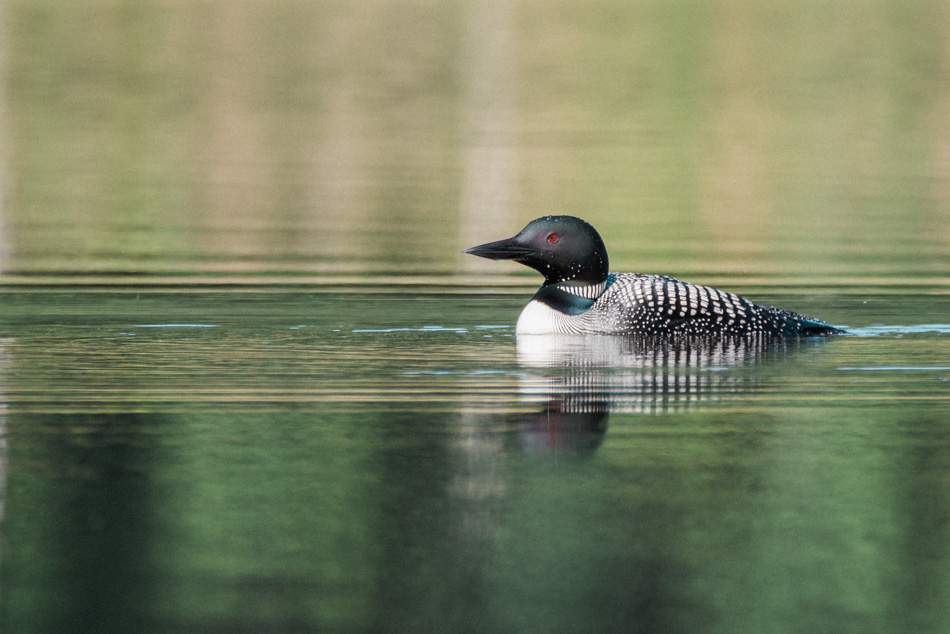
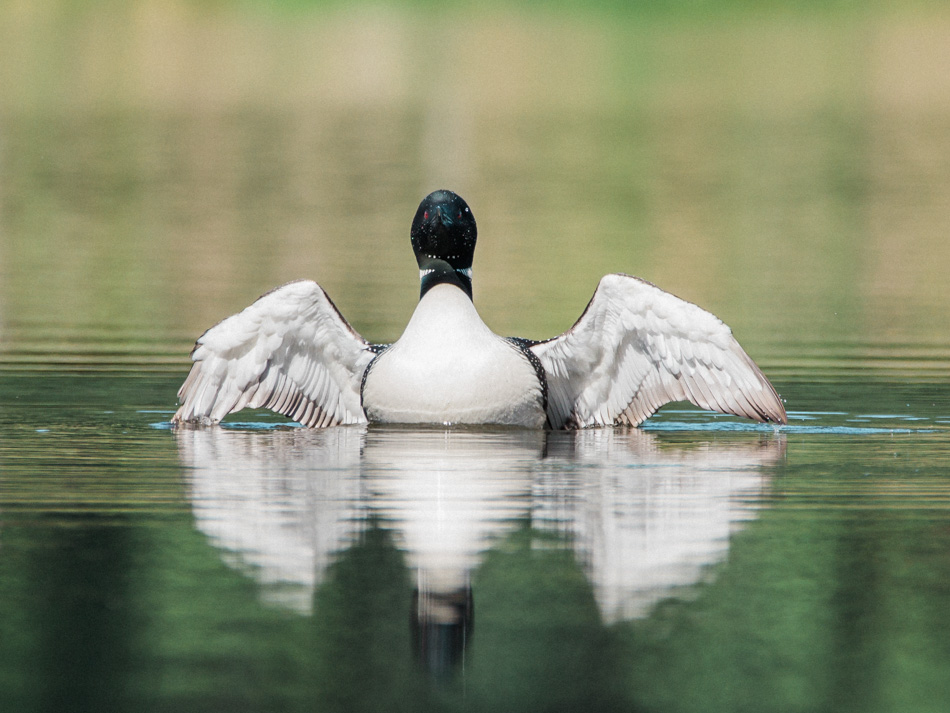
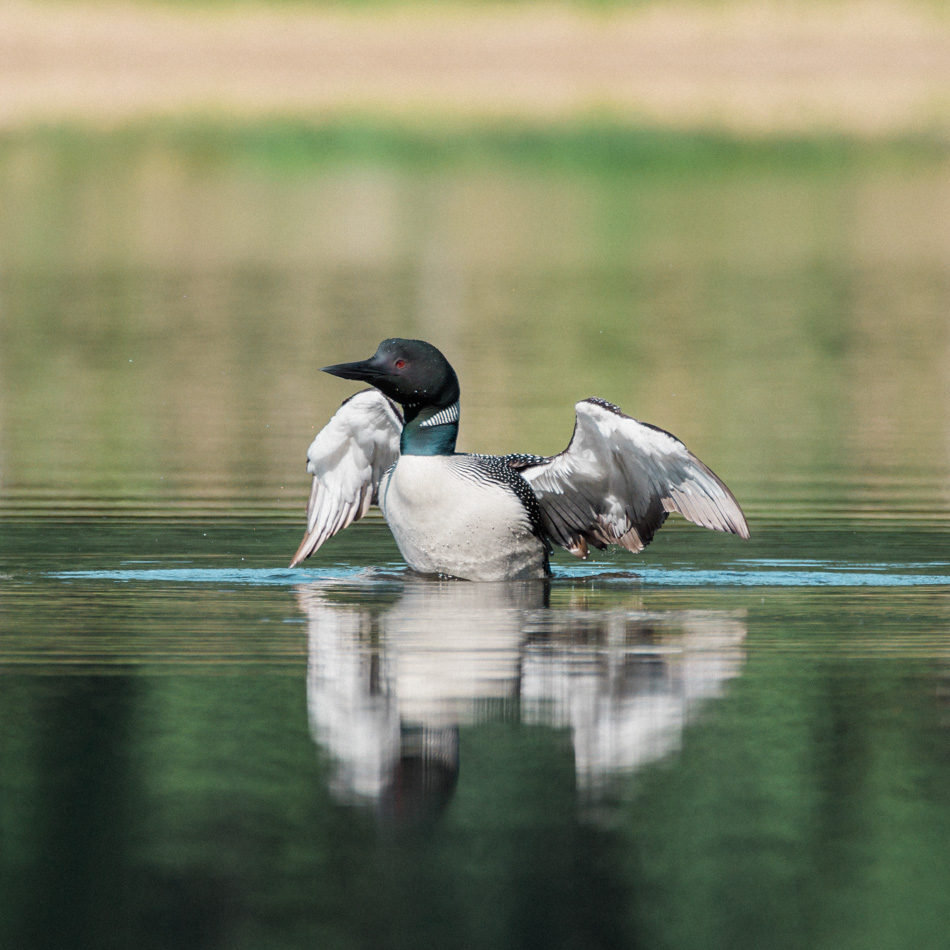
Great Blue Heron at Dawn

Early this morning I walked down to the Ashuelot River Park in Keene, NH in the cool morning air. After walking through the entire park and not seeing a single bird, I finally spotted a great blue heron fishing at the base of the small dam near West Street. Before I could setup my camera, the heron flew a short distance over to a muddy patch closer to the West Street bridge. The heron then began to work through a series of different poses, almost as if it was practicing an early morning yoga routine.
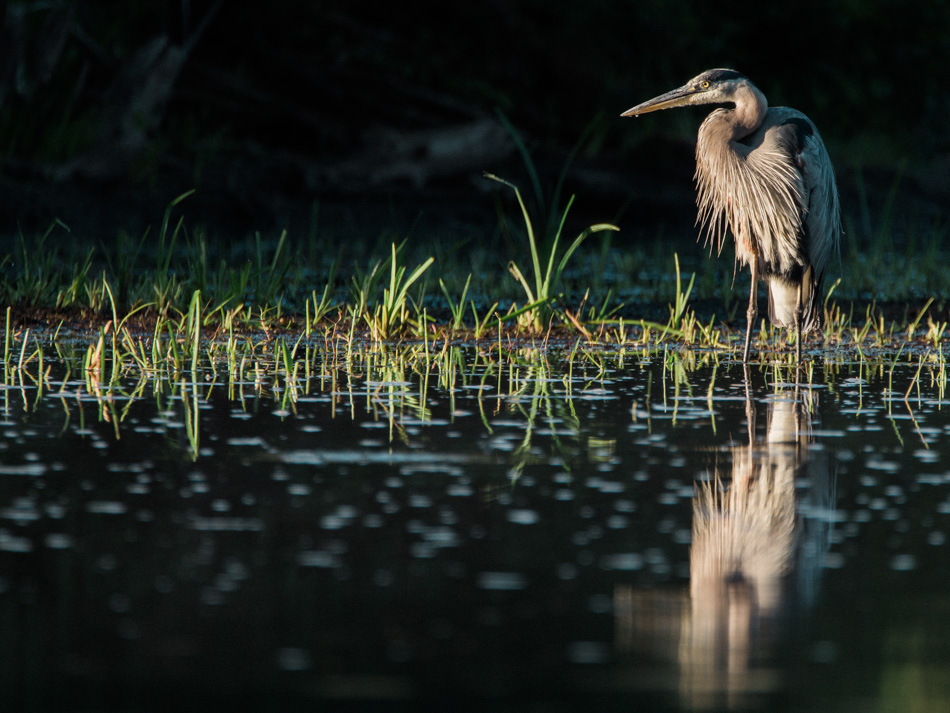
My favorite photo of the series is one in which the heron’s beak is open, as if gasping at its own reflection on the surface of the river. I have done the same on many a morning, looking into the mirror for the first time just after leaving my bed.
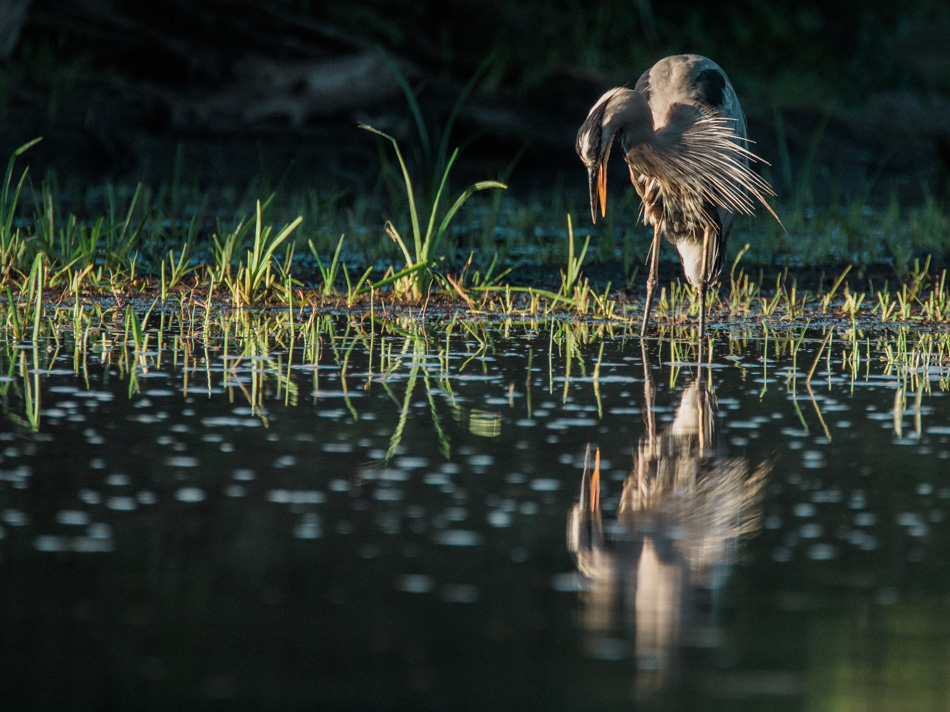
The heron seemed to combine moments of hunting for breakfast with other moments of fastidious cleaning, twisting its neck into a variety of different contortions.
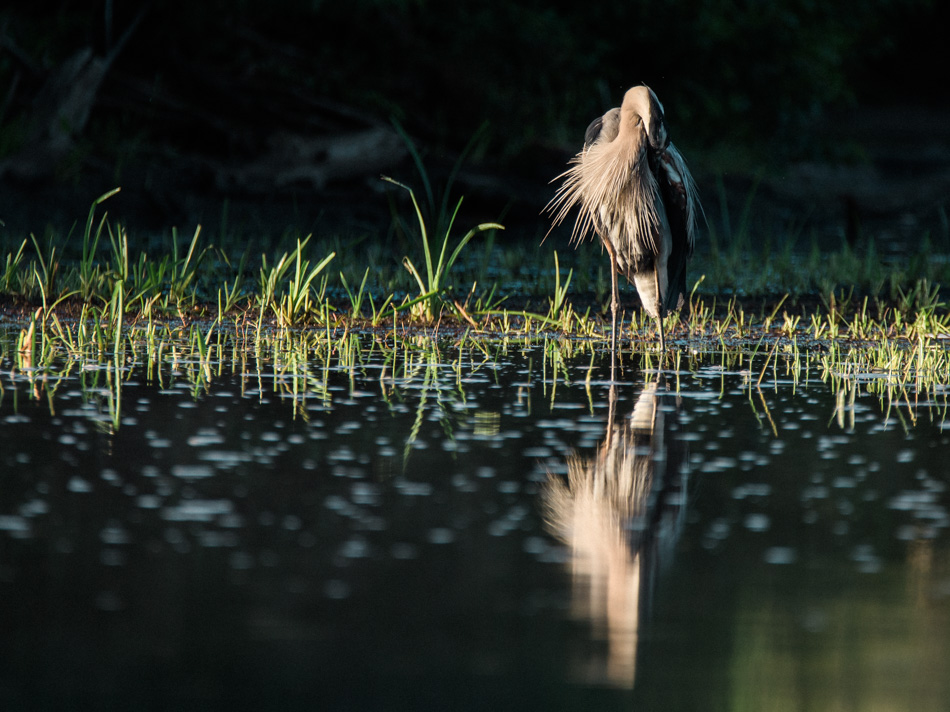
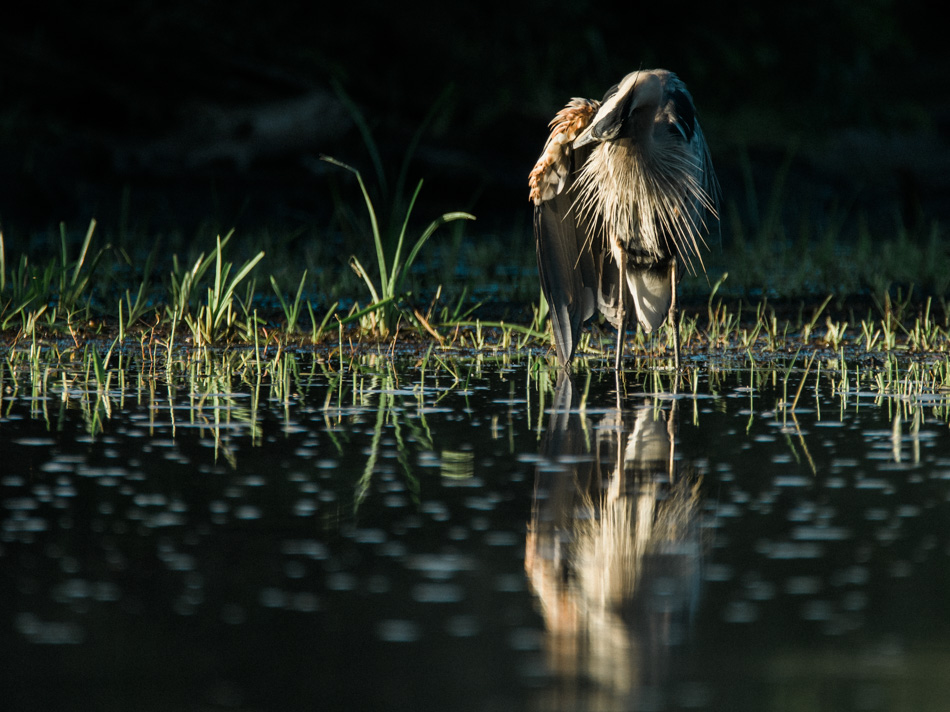
After watching for about twenty minutes, I packed up my gear to return home and begin my last workday of the week. It was good to get out for a little shutter therapy before starting my day.
Nesting Bald Eagles

This afternoon, I paid another visit to the bald eagle nest on the Connecticut River just North of Brattleboro, VT. As we approached the nest, we could clearly see an eagle perched atop the right side of the nest. However, something was different about this eagle because the trademark white head was missing. For the first time, I was seeing one of the young eagles standing proudly on the rim of the nest.
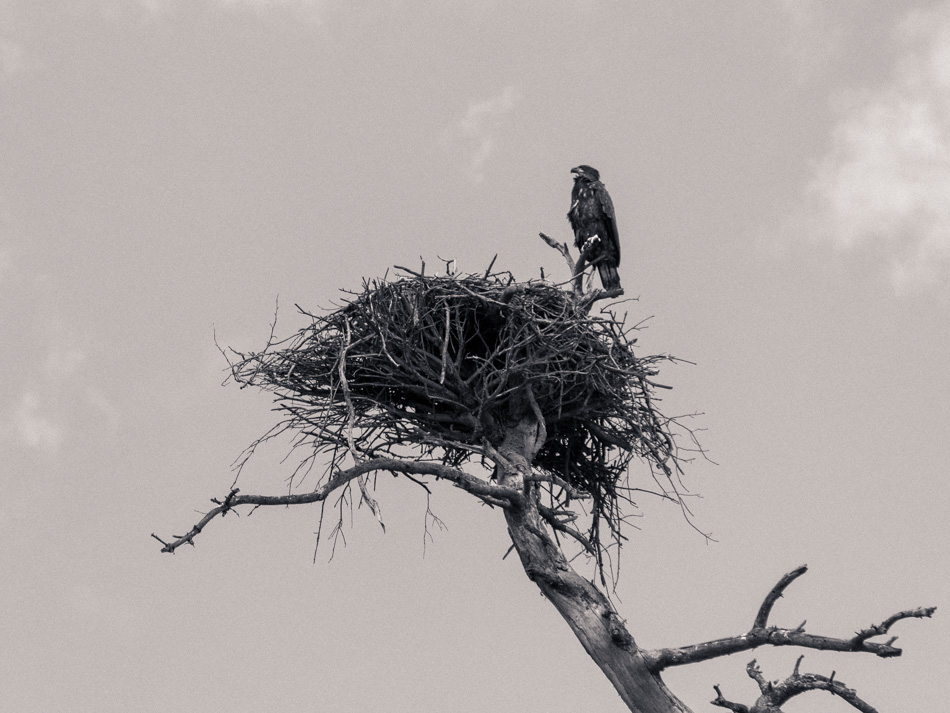
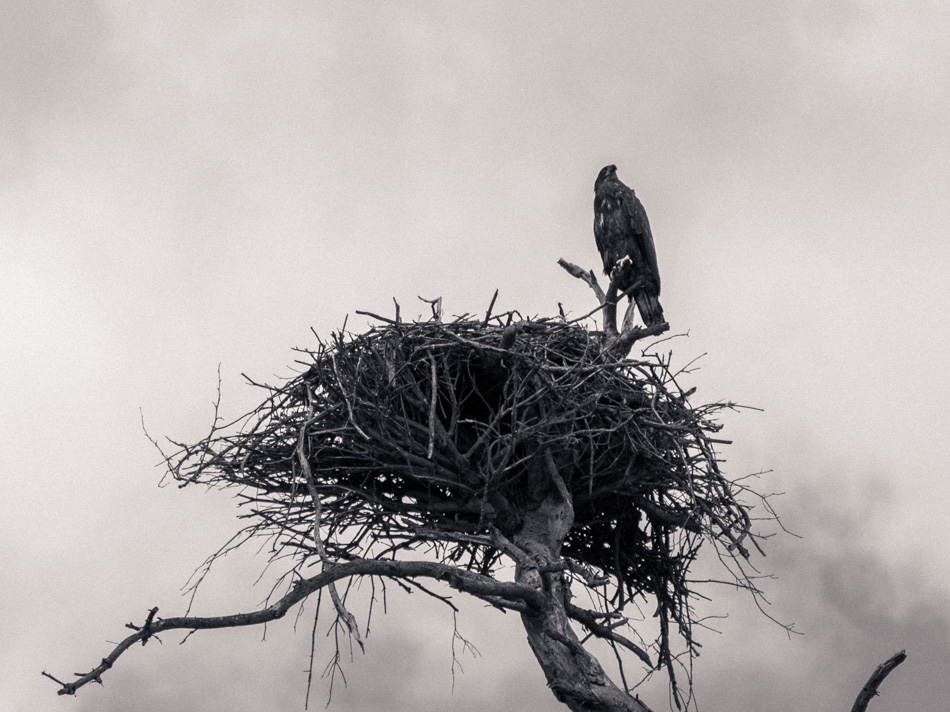
As we drifted past the nest, we could see another juvenile bald eagle flying upriver towards the nest. The young eagle still perched on the nest began to call to the other eagle, and eventually it took flight to join its sibling.
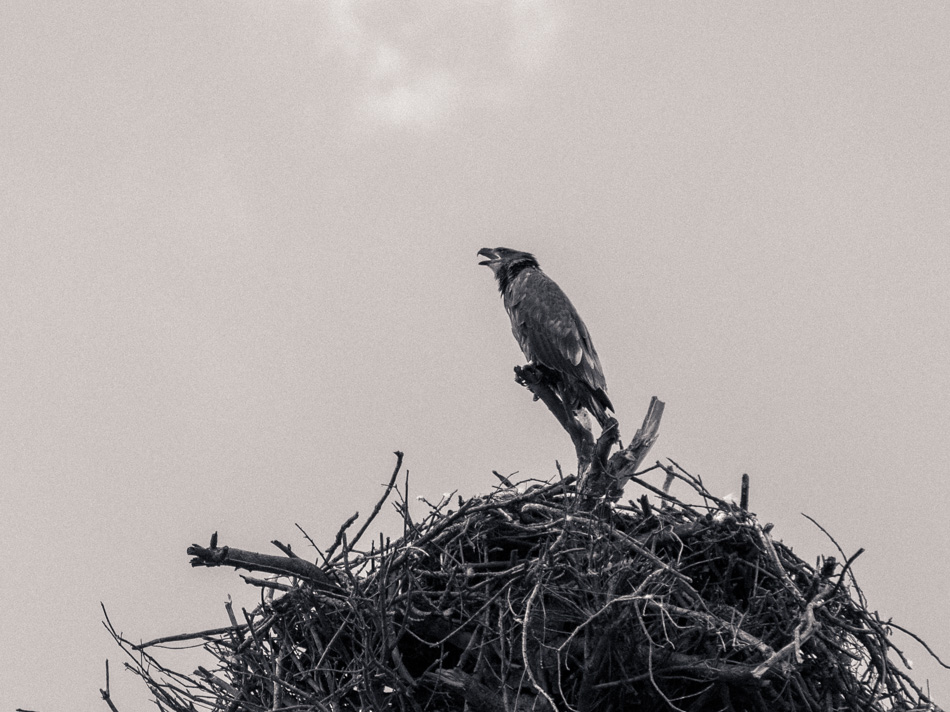
We continued a little way past the nest before making a sweeping turn to point the boat downriver. As we approached the nest from the North, we could clearly see that the adult bald eagle had returned and was perching on one of the dead tree limbs below the nest looking downriver. The sun began to strike the eagle’s prominent white head, causing it to glow against the bright sky.
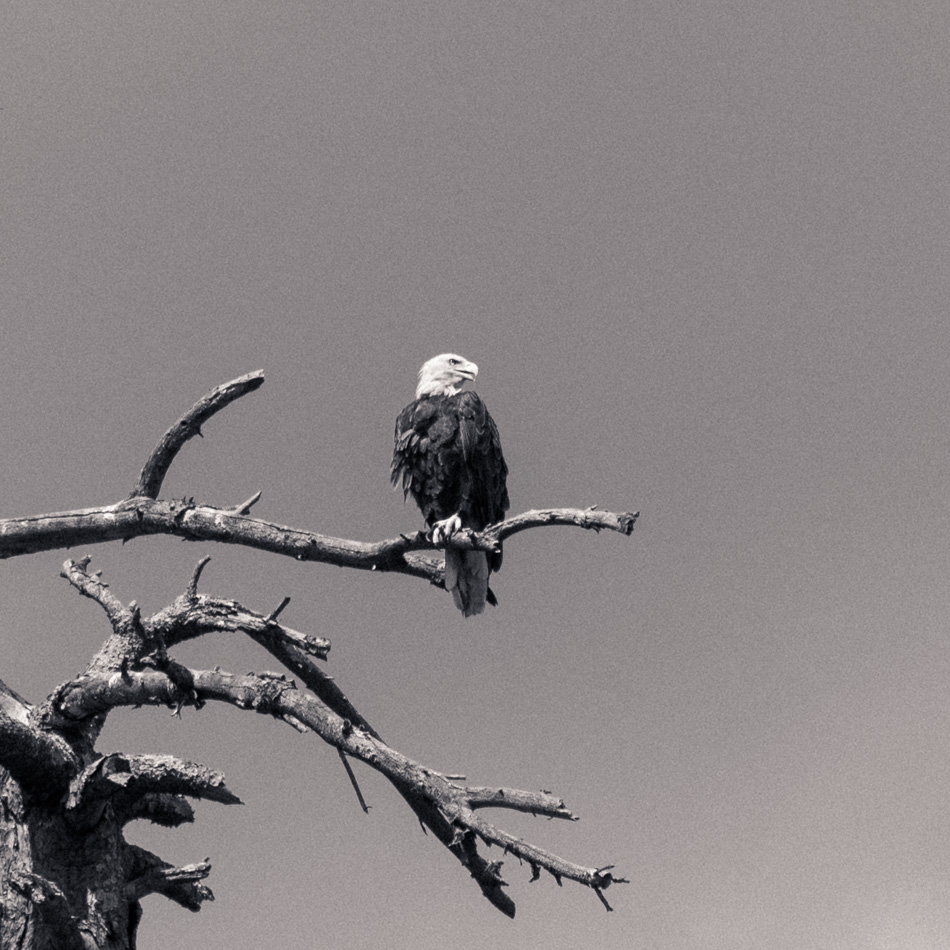
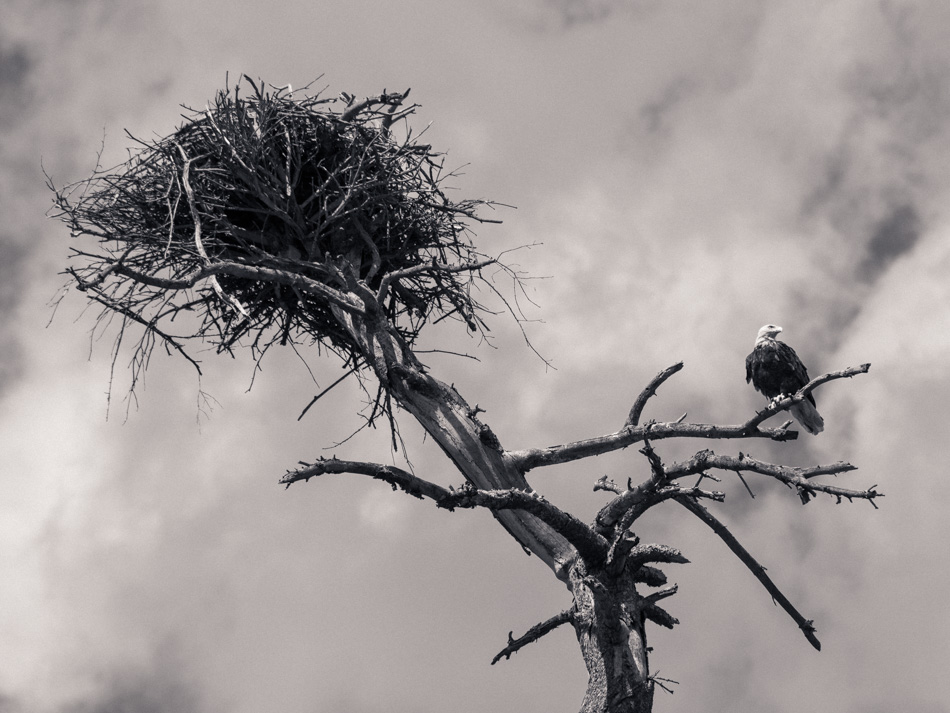
Thanks again to Bob and Stella for taking me out on the river to follow the progress of this family of bald eagles. This has been quite an adventure.
Connecticut River Great Blue Herons

This afternoon, I had another chance to take a boat ride on the Connecticut River near Brattleboro, VT. We started by floating upriver to where the bald eagle nest is, but we only saw the adult flying around off in the distance, and the juvenile eagle remained hidden below the rim of the large nest. We went a little ways past the nest and then turned around, but the eagles were still not visible at the nest.
Not too long after the second eagle nest encounter, we saw a great blue heron hunting patiently along the shore. While I reached for a longer lens, the bird took flight and disappeared. We quickly relocated the bird along the shore just around a slight bend in the river, and it continued to take flight for short burst staying just downriver from the boat until it finally gave up and streaked across the river in front of us.
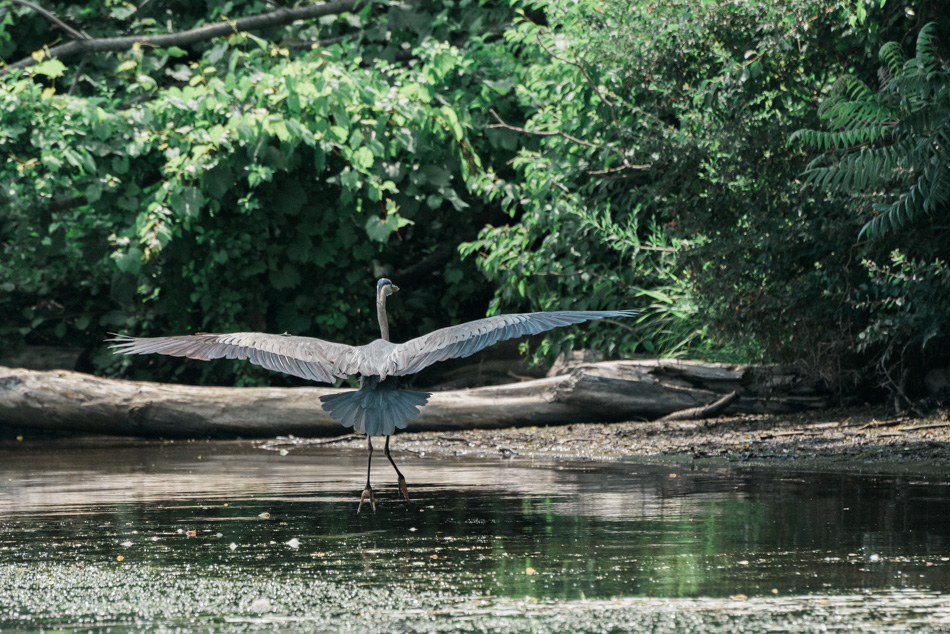
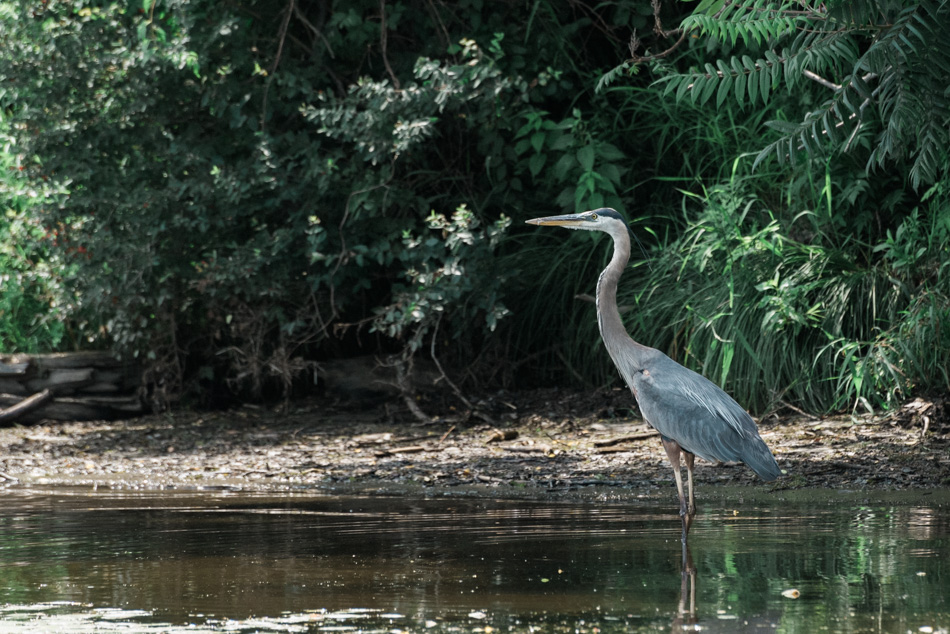
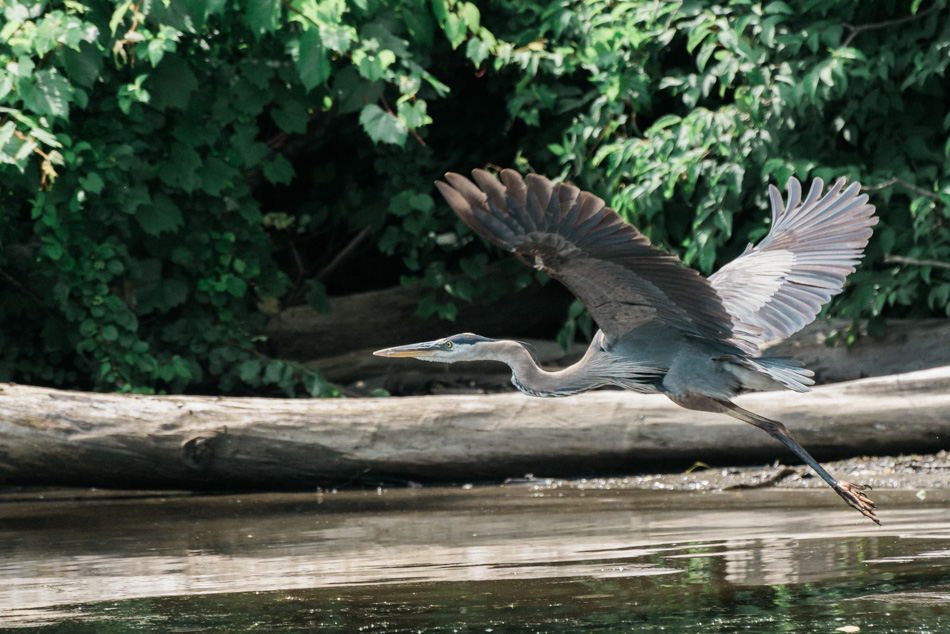
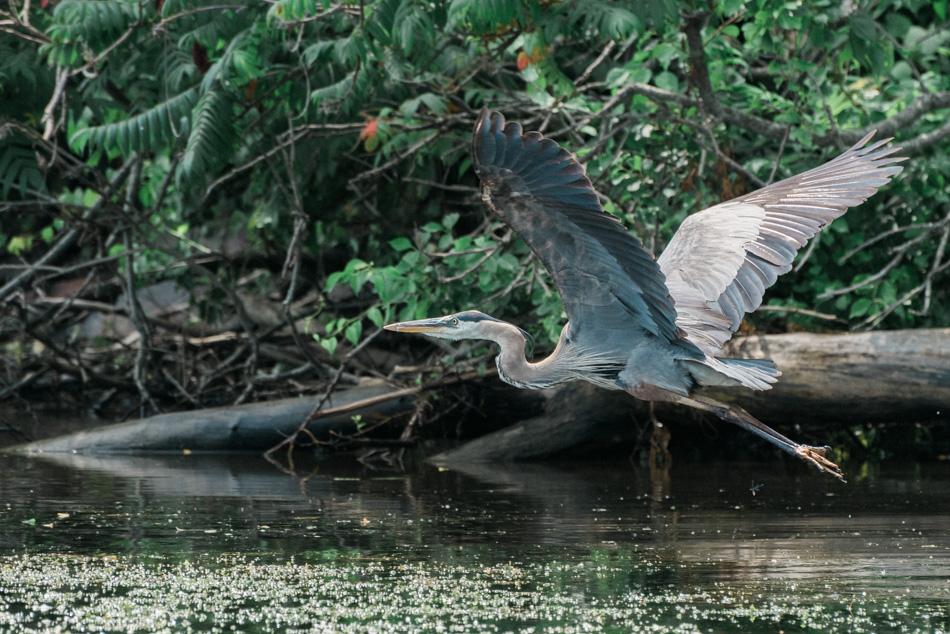
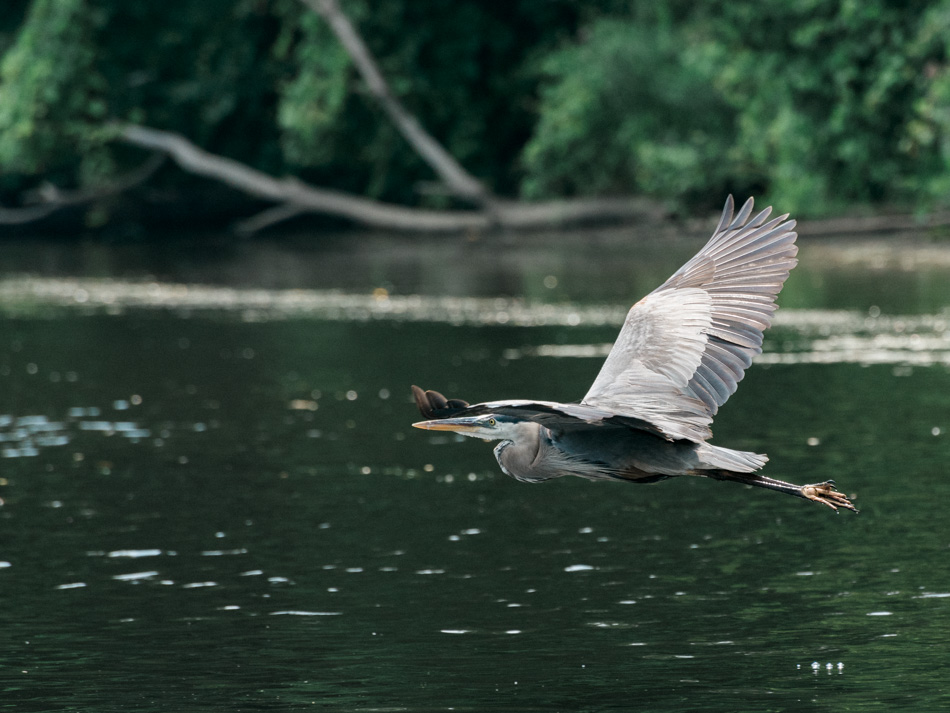
This proved to be the first of many different encounters with great blue herons as we worked downriver. All in all, we saw about four or five different herons during out trip, with many of them taking flight near the boat. It was amazing to see such a large bird effortlessly take flight in front of our boat.
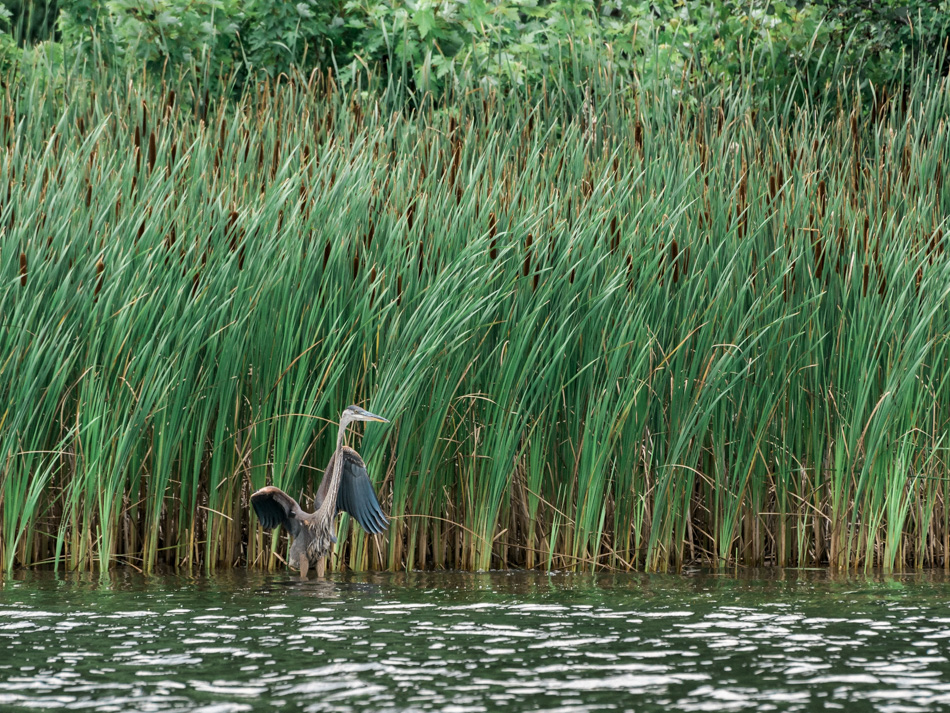
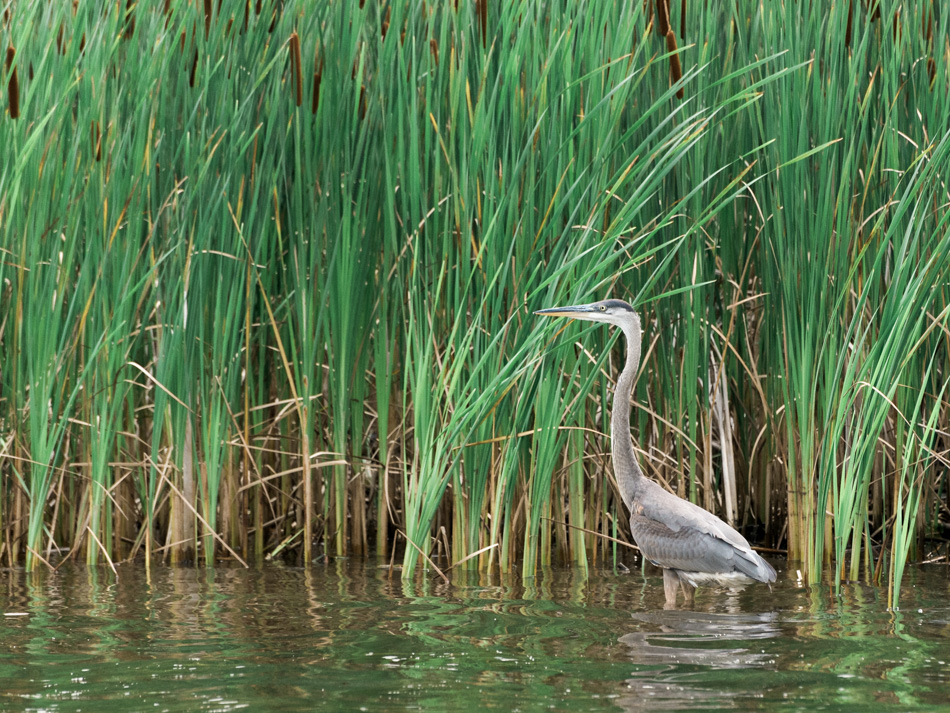
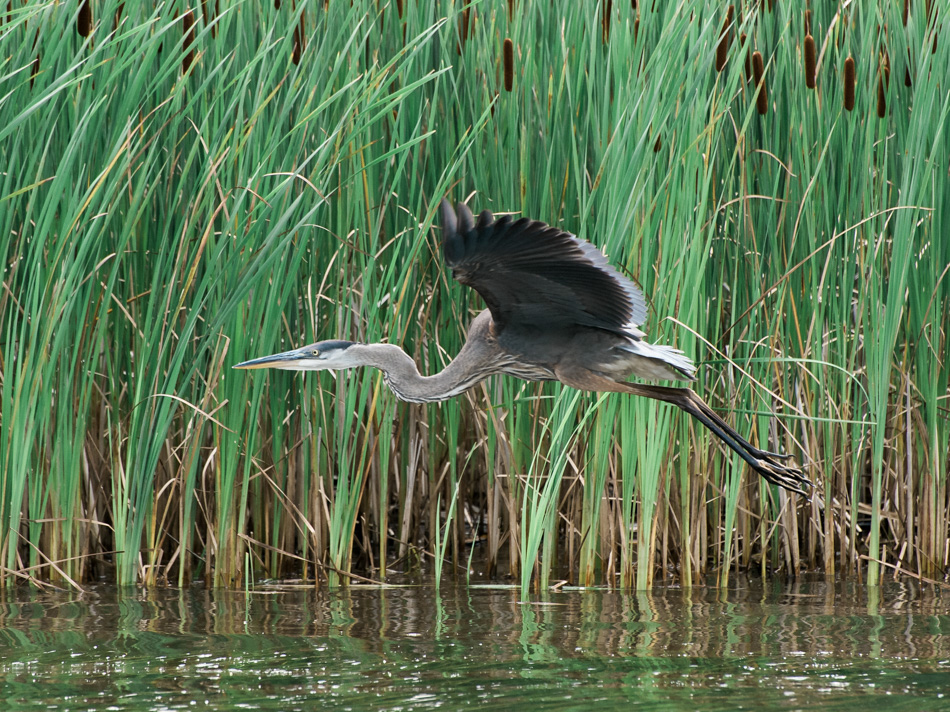
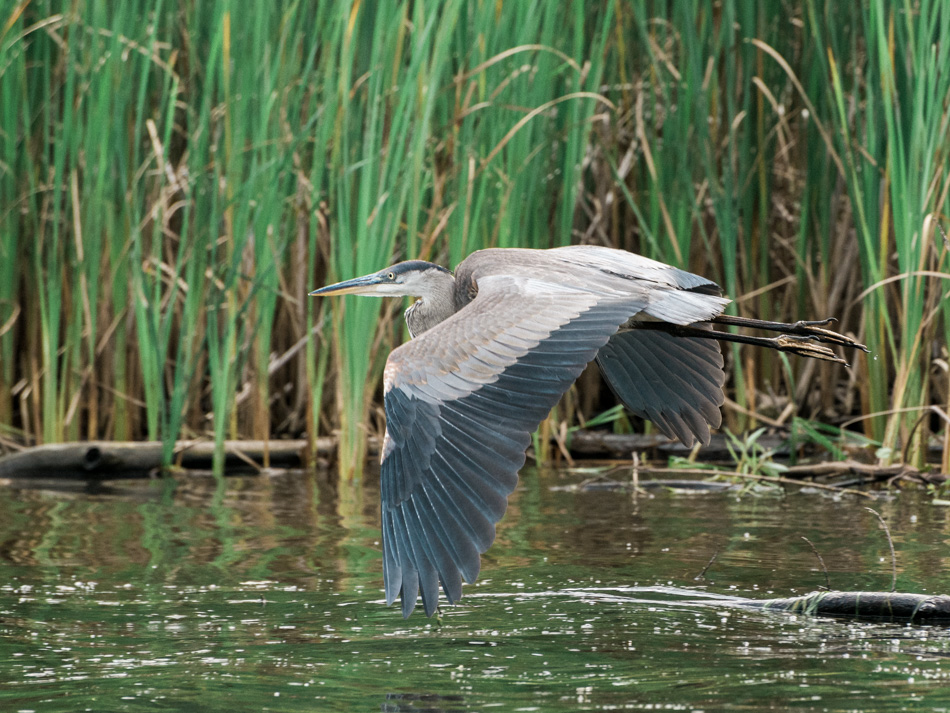
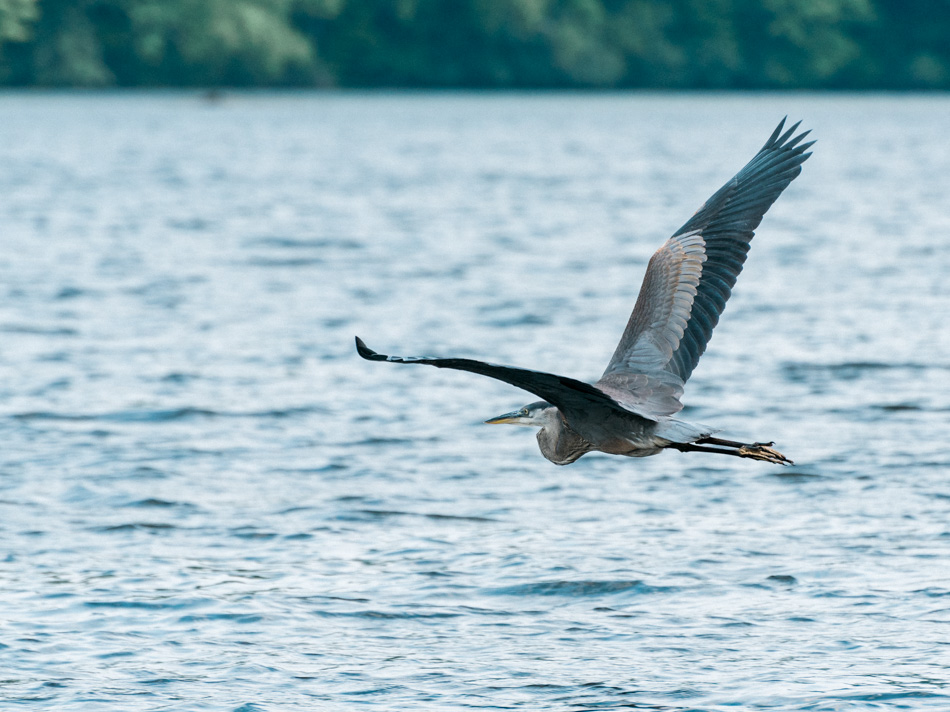
The herons were so numerous that we even found one resting in a tree near the river as we worked our way back upriver towards the marina.
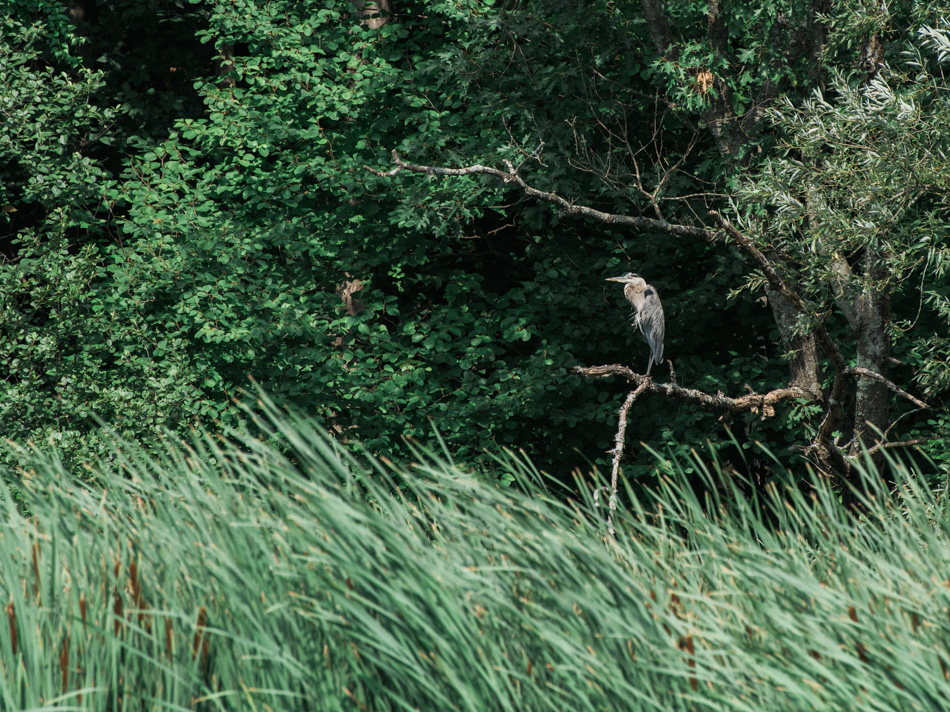
Thanks again to my friends Stella and Bob for another wonderful boat ride on the Connecticut River. I truly appreciate the opportunity.
Foggy Wildwood Trees

This morning, I woke to discover that a heavy fog had blanketed the area. I dressed quickly, grabbed my camera, and without eating breakfast drove over to Ladies Wildwood Park off of Park Avenue here in Keene, NH. I knew that I had to get there quickly, since the sun was rising and would soon burn off the heavy fog.
I parked at Wheelock Park by the pool, and made the short walk across Park Avenue to Ladies Wildwood Park. The conditions were nearly perfect, with the heavy fog starting to lift but still shrouding the large trees in the park. I entered the park on the East end, and headed West toward the other side of the park. It was on the West side that I found the best conditions because I was able to position myself far enough from the trees to get some nice aerial perspective, and let the fog do its thing.
On thing that is beautiful about this park is that in addition to the numerous interesting trees, most of the park is covered with lush green ground cover. The ground cover really adds to the overall atmosphere of the photos, especially when shooting in these conditions.
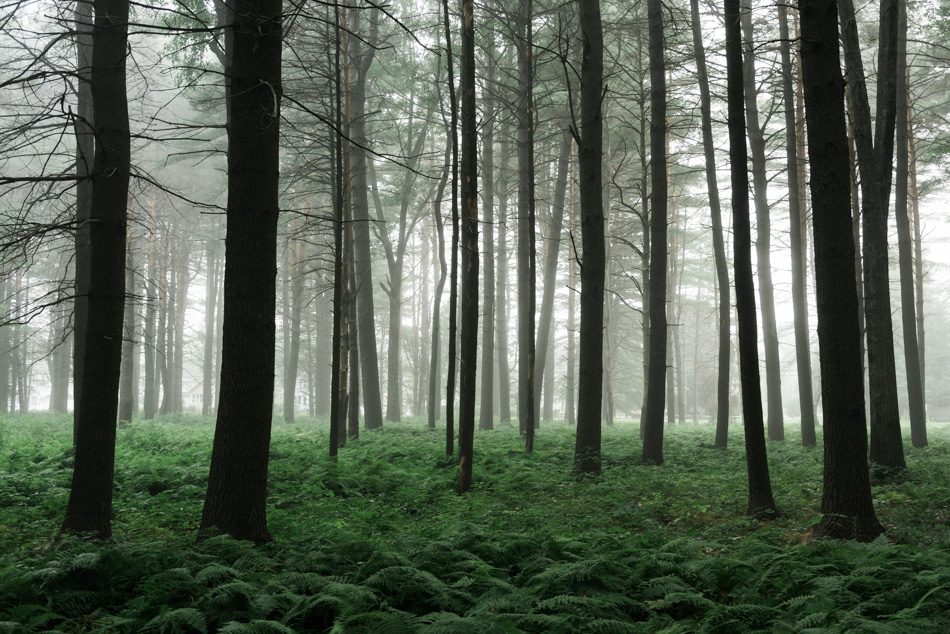
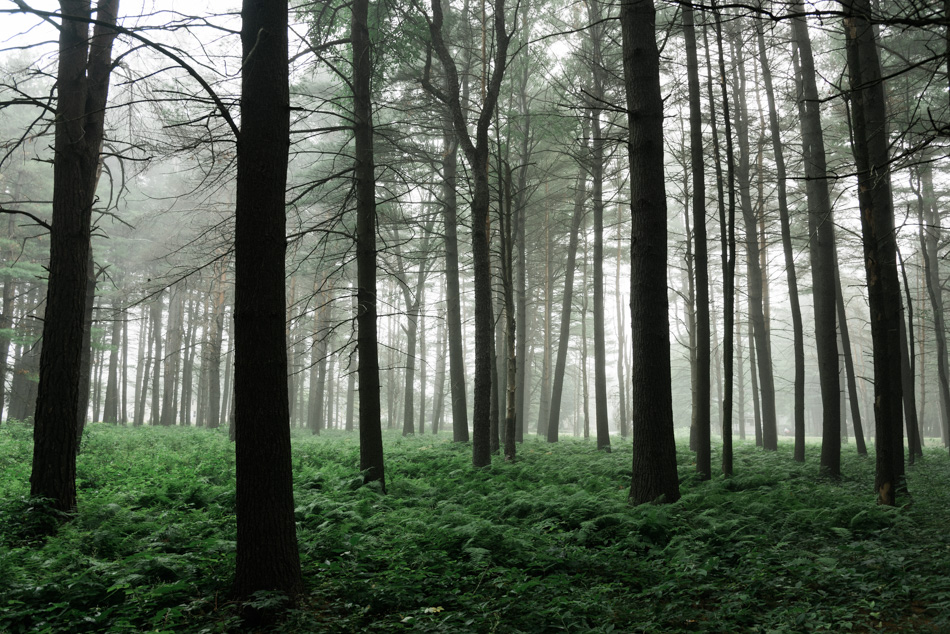
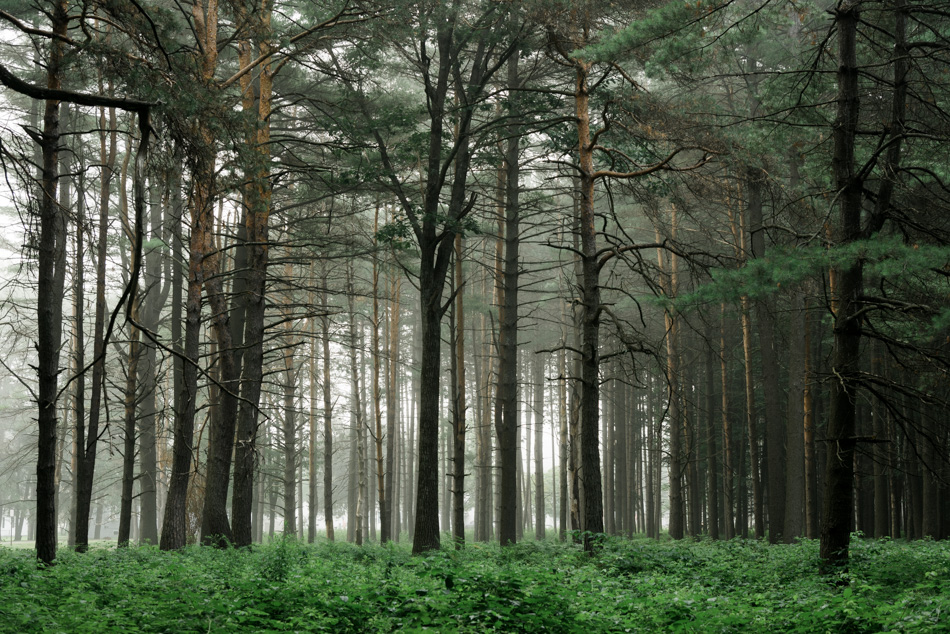
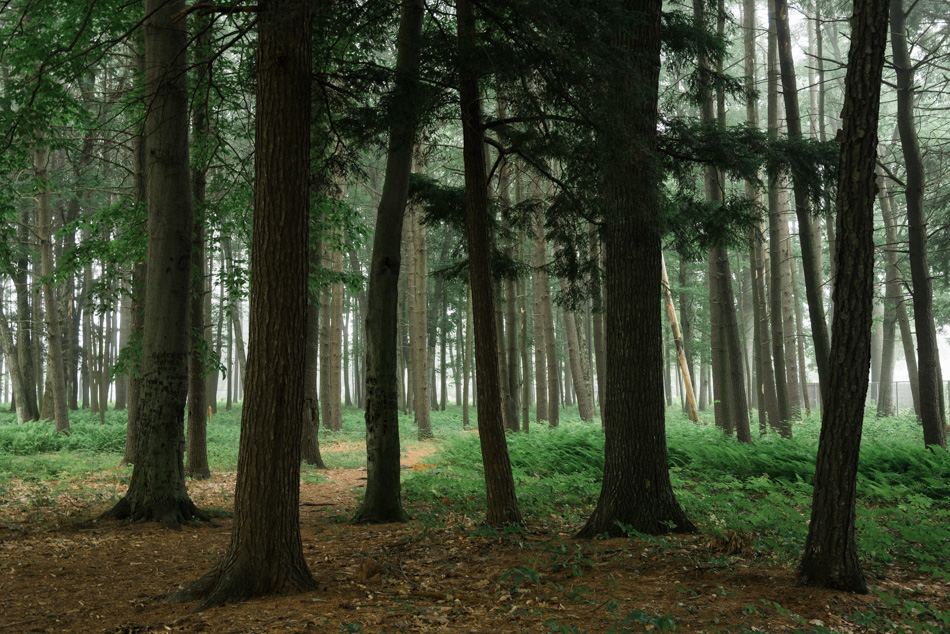
Another advantage of photographing in Ladies Wildwood Park is that the park has several distinct sections, each populated by different species of trees that give the park many different looks. Just by moving around you can capture many different variations, making it an interesting place to practice photography. Each time I come here, I am able to find new things even though the park itself is fairly small.
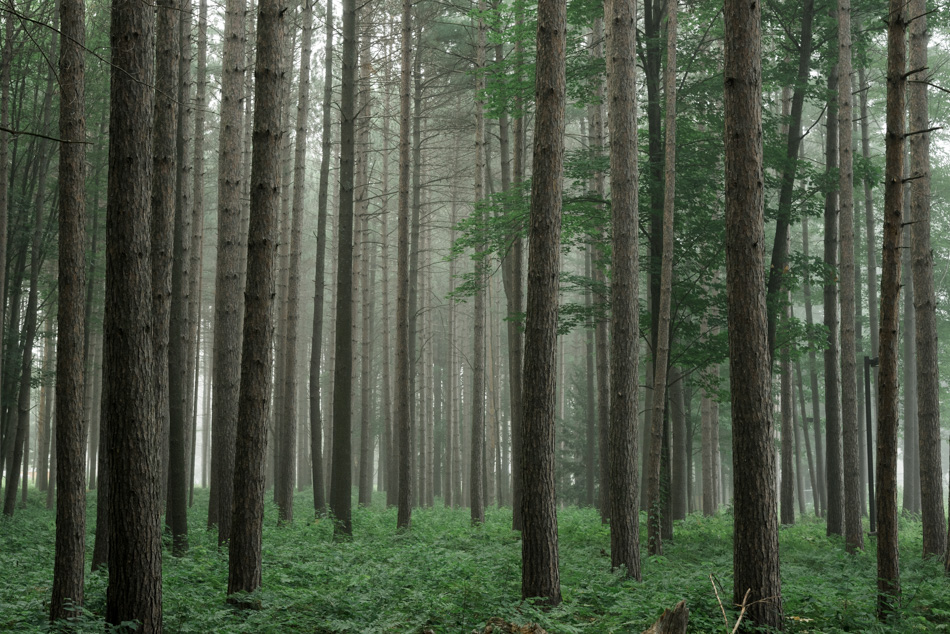
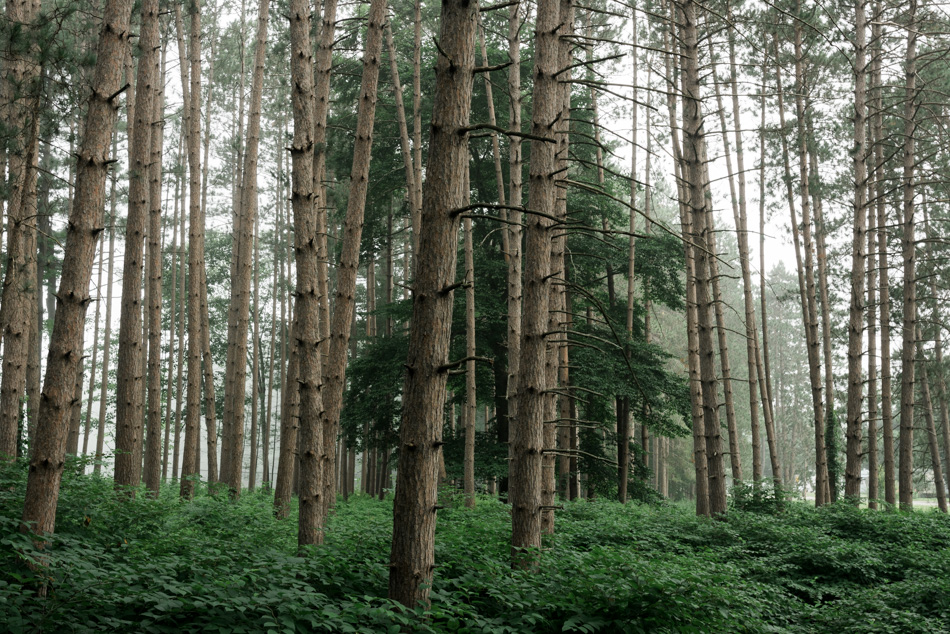
I cannot believe how many times I drove by Ladies Wildwood Park without ever stopping to explore it. This is one of the great things about photography — it constantly pushes me to explore new places, at different times, and under different conditions. It’s a great way to observe the changing nature of the world around me.

